The St. Louis tornado of 1896 was a powerful and destructive tornado that struck the city of St. Louis, Missouri on May 27, 1896. The tornado was part of a larger outbreak of severe weather that affected much of the Midwest and Great Plains regions of the United States.
The tornado struck the city of St. Louis at around 4:30pm on May 27, 1896. It began in the western suburbs of the city and traveled eastward, passing through the downtown area and continuing into the eastern suburbs. The tornado was moving at a speed of around 60 miles per hour and was accompanied by heavy rain and strong winds. It caused widespread damage to homes and businesses in St. Louis, with hundreds of structures destroyed or severely damaged. Many of the buildings that were hit by the tornado were made of brick or stone, and they were unable to withstand the force of the winds. The tornado also toppled trees, utility poles, and other objects, causing further damage and disruption.
The St. Louis tornado killed at least 255 people and injured over 1,000 others. It was one of the deadliest tornadoes in American history at the time, and it remains one of the most destructive natural disasters to ever hit the city. Many of the fatalities were caused by collapsing buildings or flying debris, while others were due to injuries sustained while trying to escape the storm.
The tornado caused widespread damage to buildings and infrastructure in St. Louis, including the destruction of hundreds of homes and businesses. The tornado also damaged a number of important landmarks, including the Old Courthouse, which was left in ruins. In the aftermath of the disaster, the city of St. Louis launched a major recovery effort, with volunteers and rescue workers working to provide aid and assistance to those affected by the tornado. Despite the damage and loss of life, the city was able to rebuild and recover from the disaster, and it continued to thrive and grow in the years that followed.
#1 7th and Rutger Streets damage, 1896
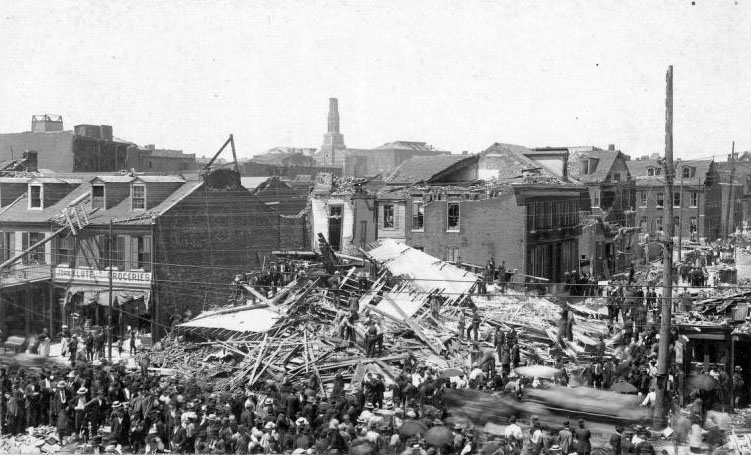
The tornado struck this intersection in Soulard with particular force, causing many deaths at this location. A large crowd gathered at the site of Mauchenheimer's saloon, whose address had been 1300 South 7th Street. Across the street, Klute's Grocery, at 1305 South 7th, still stood. In the distance the damaged church of St. Vincent de Paul, at Park Avenue and 9th Street, can be seen.
#2 7th and Rutger Streets damage, 1896
#3 This view looking south on 8th Street from Rutger Street shows people wandering through the rubble. The De La Vergne Refrigerating Machine Company on Park Avenue can be seen in the distance.
#4 The roof is missing from this household storage business, revealing a massive jumble of furniture and other items. This business was located at Jefferson Avenue and LaSalle Street.
#5 This view of Allen Avenue, looking west from Jefferson Avenue, clearly shows the severe damage inflicted on the homes and other buildings along this street, just southwest of Lafayette Park.
#6 This is a block of damaged flats, or apartments, located at Allen and Ohio Avenues, southeast of Lafayette Square.
#7 This building, located at 9th and Allen streets in the Soulard neighborhood, was a gathering place for the area’s Czech community in the 19th century.
#8 Buildings at Ohio and Park Avenues in ruins, 1896
#9 City Hospital was the earliest charitable endeavor of the City of St. Louis, established in 1845 to provide medical care to the indigent.
#10 Compton Heights homes nearly destroyed, 1896
#11 Damage at a building identified as Central Garden, 1896
#12 This business area of South Broadway, north of Barry Street, sustained heavy damage from the tornado.
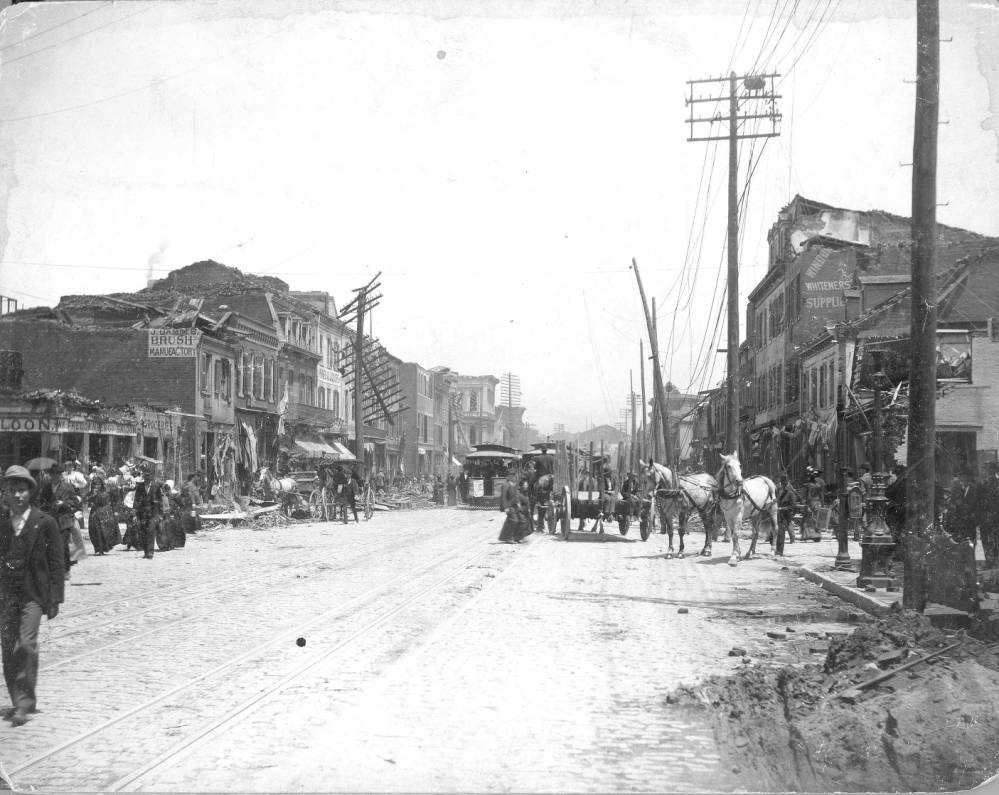
Walls and roofs are missing, broken telephone poles and wagons are heaped in the street, and people are milling around or busy trying to clean up. Freudenberg's saloon (1437 South Broadway), a brush company, and a liquor store are among the businesses visible in this photograph.
#13 The tornado devastated this area of Jefferson Avenue just west of Lafayette Park.
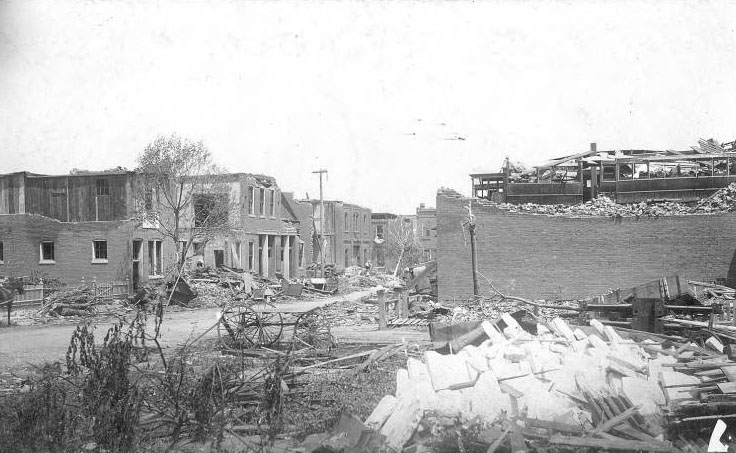
The building on the right is the streetcar shed of the People's Railway Company, one of over a dozen privately owned rail companies that served St. Louis at the time. One car can be seen on the unroofed 2nd floor. It seems to be car 12, Fourth and Chouteau line. The words Fourth and Chouteau can be seen on its side, and some of the words on its roofline seem to be stops on this line, such as the Iron Mtn. Depot, Lafayette Park, and a Garden. The People's Railway Company's offices were at 18th Street and Park Avenue, on the east side of Lafayette Park.
#14 Cleanup is underway in this view of 8th and Rutger streets, in the Soulard neighborhood. The tornado did some of its worst damage, with much loss of life, in this area.
#15 Cleanup is underway in this view of 8th Street, in the Soulard neighborhood.
#16 Damage to the Lafayette Square neighborhood, 1896
#17 Destroyed houses and a storefront, 1896
#18 This view of the eastern edge of the Lafayette Square neighborhood, looking west from Dolman Street, shows the ruins of the Herold Livery Company, at 1717 Park Avenue.
#19 The tornado devasted this area of Jefferson Avenue just west of Lafayette Park.
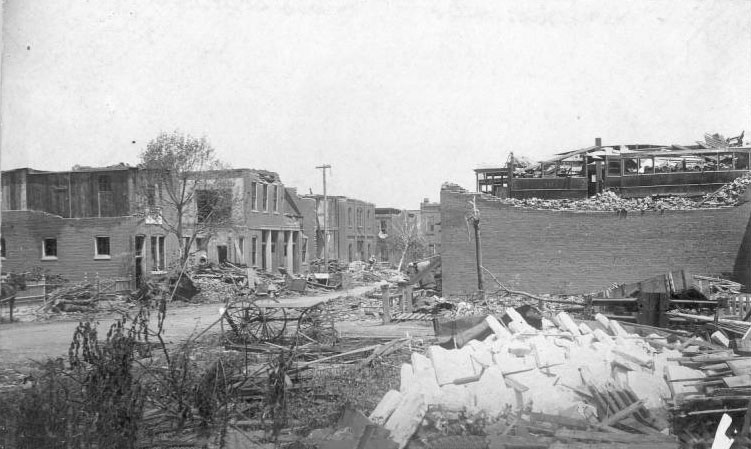
The building on the right is the streetcar shed of the People's Railway Company, one of over a dozen privately owned rail companies that served St. Louis at the time. One car can be seen on the unroofed 2nd floor. It seems to be car 12, Fourth and Chouteau line. The words Fourth and Chouteau can be seen on its side, and some of the words on its roofline seem to be stops on this line, such as the Iron Mtn. Depot, Lafayette Park, and Shaw's Garden. The People's Railway Company's offices were at 18th Street and Park Avenue, on the east side of Lafayette Park.
#20 The tornado did some of its worst damage on Rutger Street between 7th and 8th streets in the northern Soulard neighborhood.
#21 The St. Louis Fire Department’s Engine House Number 7, located on South 18th Street near Park Avenue in the Lafayette Square neighborhood, was demolished by the tornado.
#22 Grain elevator severely damaged, 1896
#23 Hodgen School northwest corner blown away, 1896
#24 The Compton Heights neighborhood, laid out in 1889, was an early planned residential development.
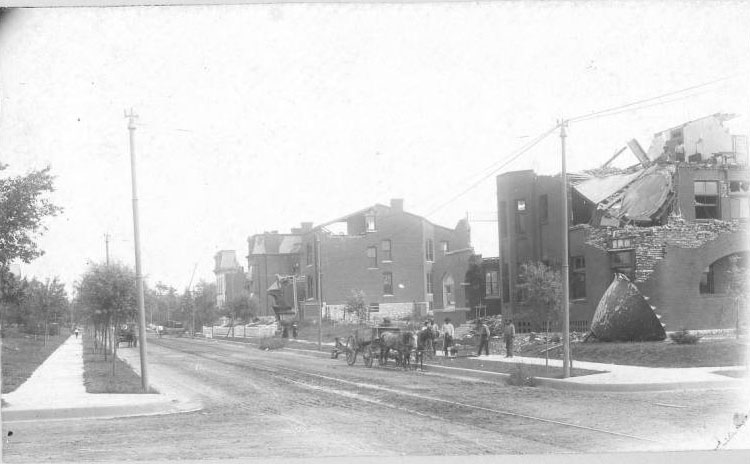
Its streets curve gently around landscaped areas in a deliberate change from the traditional grid pattern, and are named for important literary figures. Many of the upper class homes built there lost walls and roofs to the tornado. One of these homes is that of Dr. Hugo M. Starkloff, physician and father of St. Louis' famous Health Commissioner Dr. Max Starkloff.
#25 John P. Collins Livery Stables and Undertaking Company tornado damage, 1896.
#26 This building, located at 2nd and Convent Streets near the Mississippi River, was a plant where coal unloaded from barges was burned in large furnaces to create energy that powered the city.
#27 A few people walk among the ruins of Lafayette Park.
#28 This Unitarian church, at the corner of Park and Armstrong Avenues across from Lafayette Park, had just hosted a wedding an hour before the tornado struck.
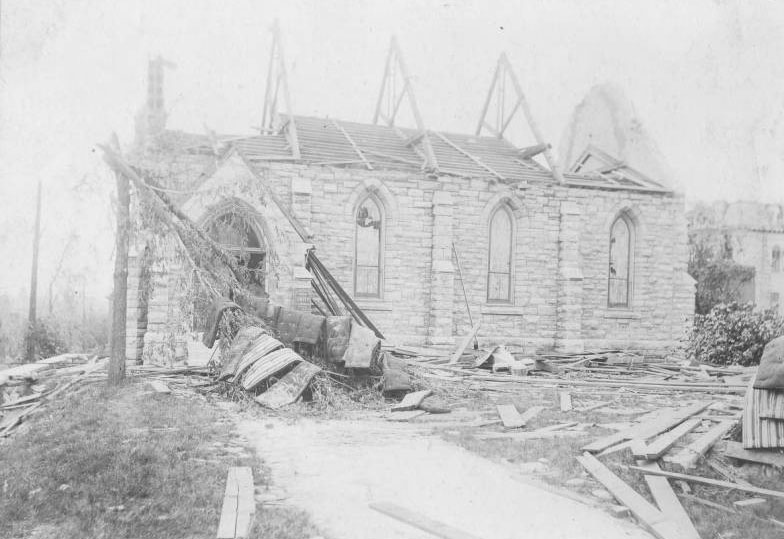
A newspaper reported that a woman who tarried there after the others had left thought it would provide shelter during the approaching storm, but was forced to flee outside when the roof caved in. Although it lost its entire roof, this church was rebuilt on the same site. Note the dozen or so mattresses draped on a tree. Armstrong Avenue is now named MacKay Place.
#29 This church, located on the southeast corner of Lafayette and Mississippi Avenues across the street from Lafayette Park, had been built in 1888.
#30 Located at Lafayette and Mississippi Avenues across the street from Lafayette Park, this church had been built in 1888.
#31 The Lafayette Park Methodist Episcopal Church was on the corner of Lafayette and Missouri Avenues across the street from Lafayette Park.
#32 This Gothic Revival style church, located at Missouri Avenue and Albion Place across the street from Lafayette Park, was built in 1878.
#33 One man stands among the destroyed trees of the park. The tornado did some of its worst damage in this neighborhood; the park did not recover for many decades.
#34 Lafayette Park, after tornado, 1896
#35 People come and go through the northeast entrance to Lafayette Park, taking in the destruction.
#36 Lafayette Park, after tornado, 1896
#37 One man stands among the destroyed trees of the park. The tornado did some of its worst damage in this neighborhood; the park did not recover for many decades.
#38 The tornado did some of its worst damage in this neighborhood, destroying nearly all the trees in the park. Damaged houses on the surrounding streets of Lafayette Square can be seen in the distance.
#39 This photograph is identified as being taken at Park Avenue and 18th Street. This area suffered a direct hit from the tornado and most structures were destroyed.
#40 Mt. Calvary Episcopal Church stood on the southwest corner of Lafayette and Jefferson Avenues, and was damaged beyond repair by the Great Cyclone of May 1896.
#41 Mt. Calvary Episcopal Church stood on the southwest corner of Lafayette and Jefferson Avenues, and was damaged beyond repair by the Great Cyclone of May 1896.
#42 Offices of the Union Depot Railway, severely damaged, 1896
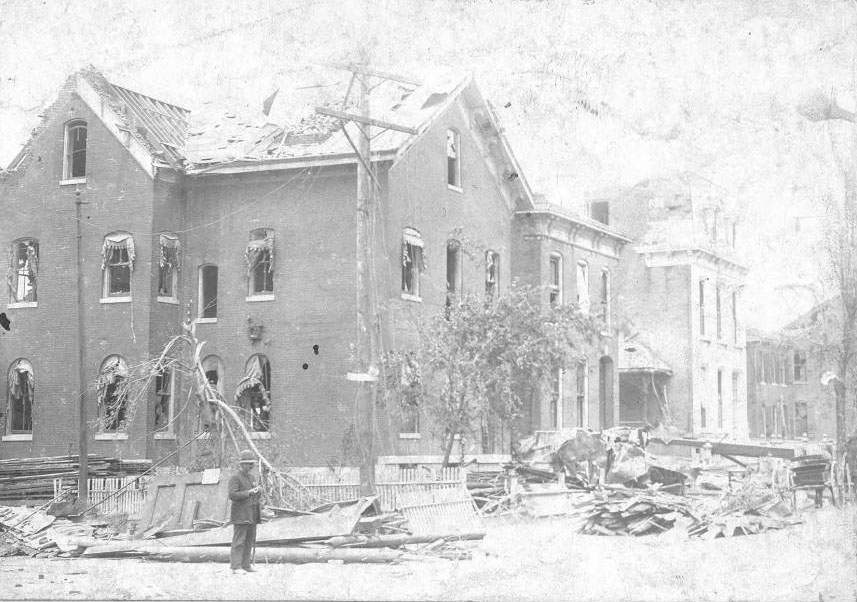
The Union Depot Railroad was one of the largest of the dozen or so privately operated rail and streetcar companies that served St. Louis in the 1890s. Curtains were sucked out of windows of its headquarters, located at the corner of Missouri and Geyer Avenues just south of Lafayette Park.
#43 Oregon Avenue residences, all but destroyed, 1896
#44 Park Avenue and 8th street ruins, 1896
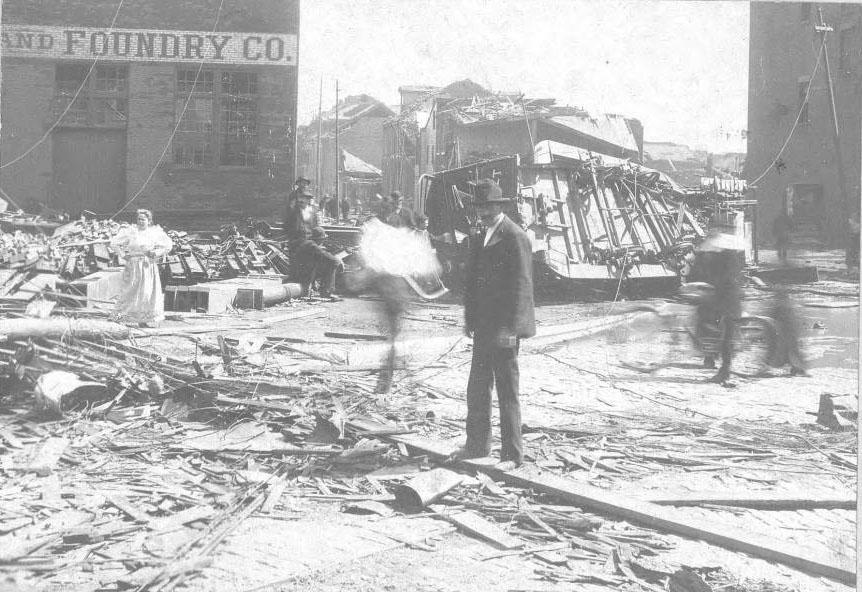
The tornado struck the Christopher & Simpson Architectural Iron and Foundry Company, located on Park Avenue between 8th and 9th streets. An overturned streetcar is seen at center right, and the iron pillars for buildings that this company made can be seen on the ground at left.
#45 Rear view of the Union Club, 1896
#46 Remains of homes in the Compton Heights area, 1896
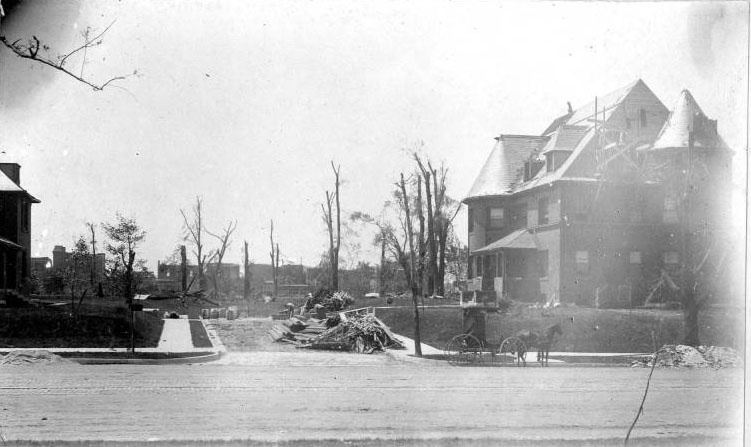
The Compton Heights neighborhood, laid out in 1889, was an early planned residential development. Some of its streets curve gently around landscaped areas in a deliberate change from the traditional grid pattern, and are named for important literary figures. This group of homes was all but destroyed by the tornado. The photograph identifies one of these homes as that of Dr. Hugo M. Starkloff, physician and father of St. Louis' famous Health Commissioner Dr. Max Starkloff.
#47 Just two blocks west of Lafayette Park, these homes at Lafayette and Ohio Avenues were in the area that was hardest hit by the tornado, 18896
#48 This was a saloon and tenement house owned by Frederick Mauchenheimer, located at 7th and Rutger Streets in the Soulard area, one of the places hit hardest by the tornado.
#49 The Peper Cotton Compress facility was located just off the levee at Broadway, Rutger, and Convent Streets.
#50 The German Gothic style Sts. Peter and Paul Church, consecrated in 1875, was the German Catholic Church for South St. Louis.
#51 Scene of destruction at Broadway and Soulard Street, 1896
#52 Scene of destruction on Accomac Street, 1896
#53 Soulard and Seventh Streets damage, 1896
#54 Soulard Market and neighboring buildings after tornado, 1896
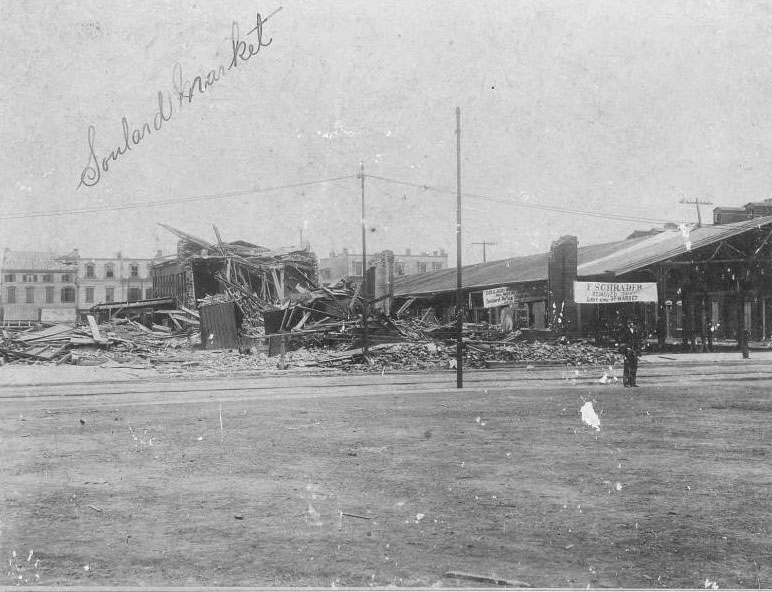
Soulard Market, established in 1841, is one of the oldest surviving open-air farmers' markets in the country. Still located at South 7th and Carroll Streets, the buildings that were destroyed by the 1896 tornado dated to the late 1840s. Several people lost their lives at this location.
#55 St. Louis City Hospital, damaged beyond repair, 1896
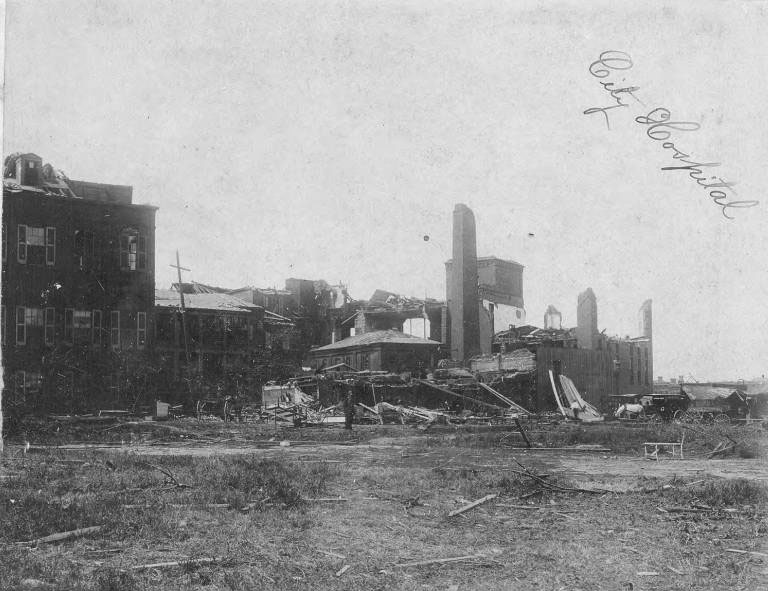
City Hospital was the earliest charitable endeavor of the City of St. Louis, established in 1845 to provide medical care to the indigent. The building that the tornado destroyed, located at Lafayette Avenue and 14th Street, had been built in 1857. Its 450 patients were moved to temporary locations, but replacement structures were not finished on this site until 1905.
#56 St. Paul’s German Evangelical Church at Ninth Street and Lafayette nearly destroyed, 1896
#57 St. Paul’s German Evangelical Church, seriously damaged, 1896
#58 St. Vincent’s Asylum, destroyed by tornado, 1896
#59 Sts. Peter and Paul Church after tornado, 1896
#60 Accounts at the time report that 16 boats were moored at the St. Louis riverfront when the tornado struck, and all were damaged or destroyed.
#61 The Cracker Castle, severely damaged, 1896
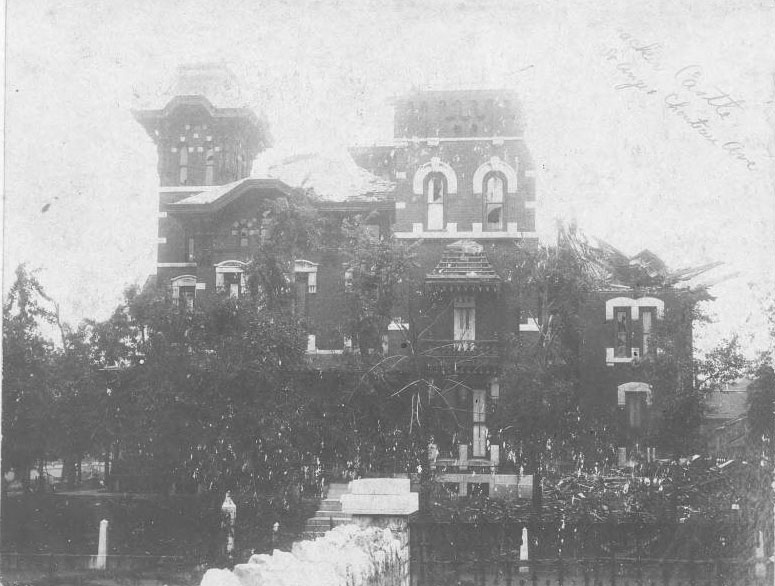
This mansion, built by Jonathan O. Pierce in the 1860s, was nicknamed the Cracker Castle because Pierce's fortune came from part ownership of a business that supplied crackers and hardtack to soldiers during the Civil War. Located at the corner of Chouteau and St. Ange Avenues, it was struck by lightning and one of its towers was hurled away during the terrible tornado. It was damaged beyond repair and was demolished.


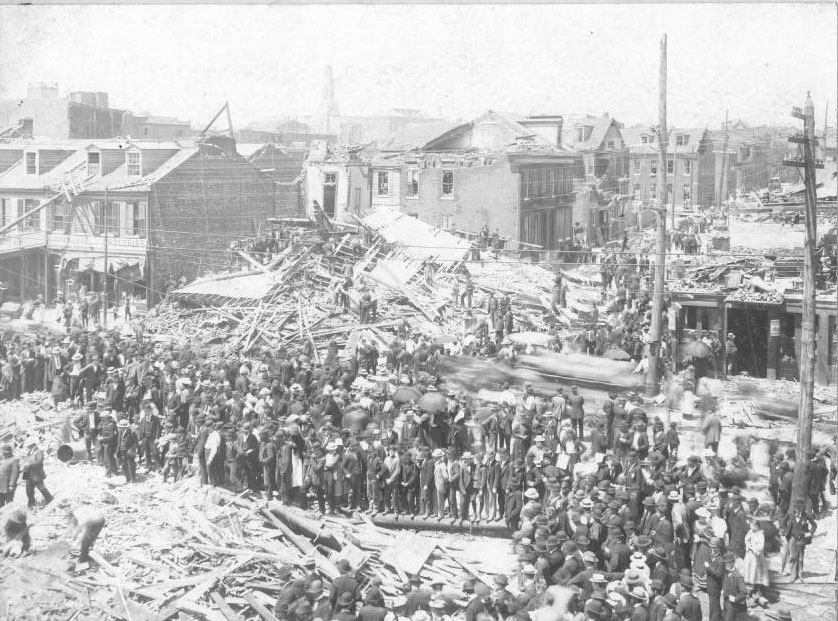
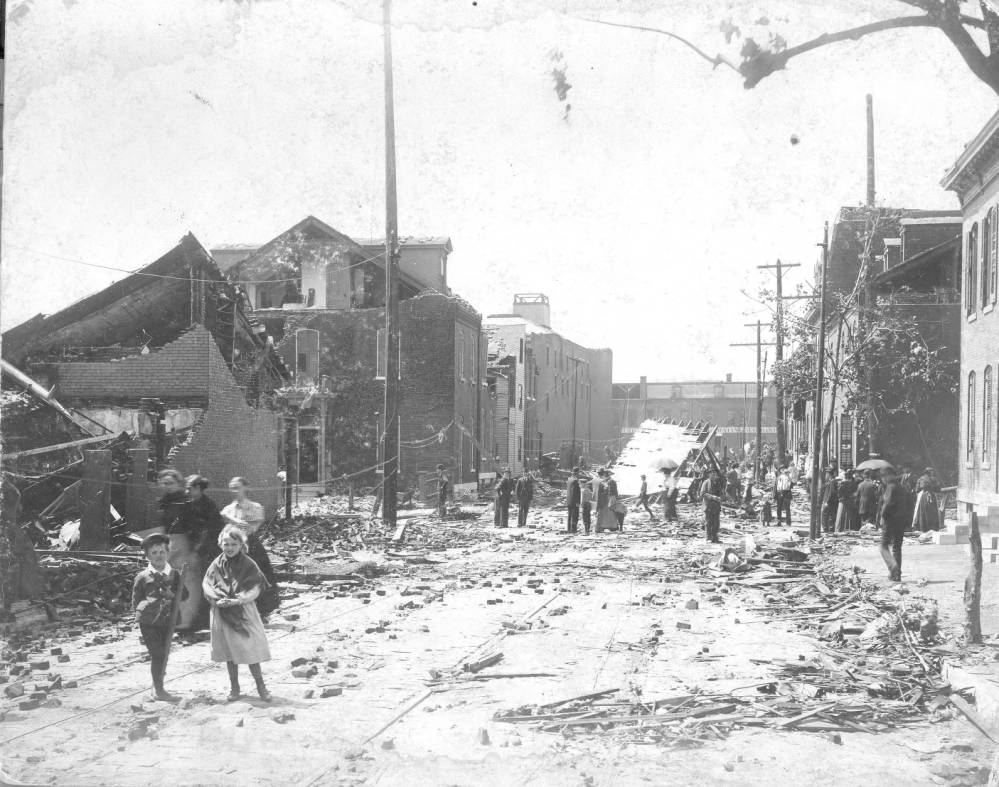
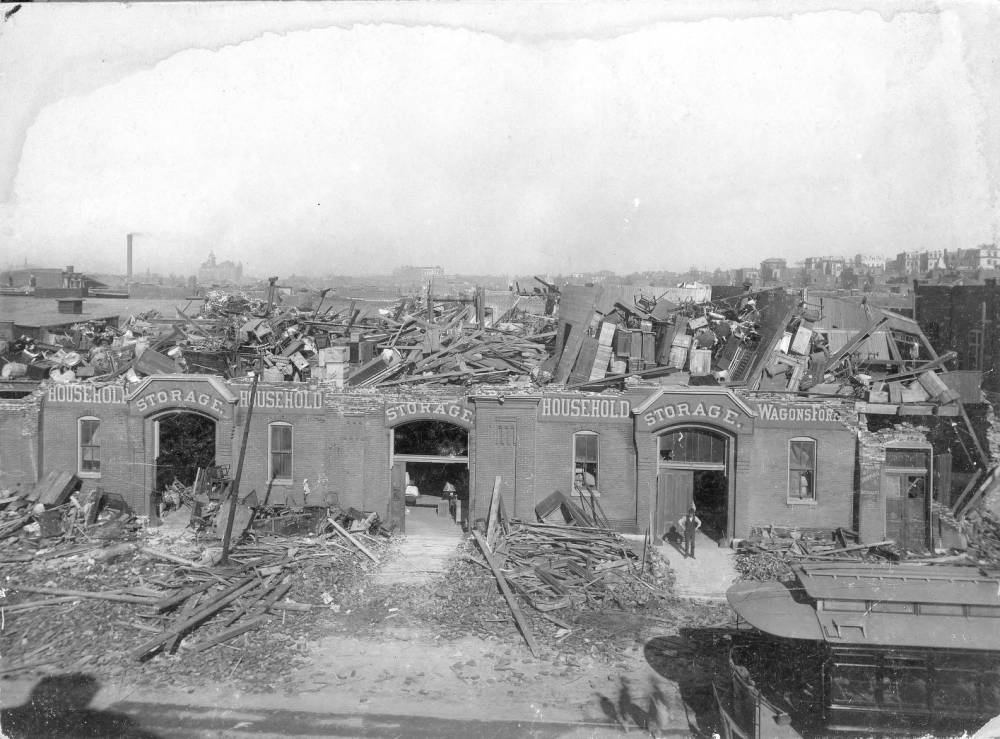
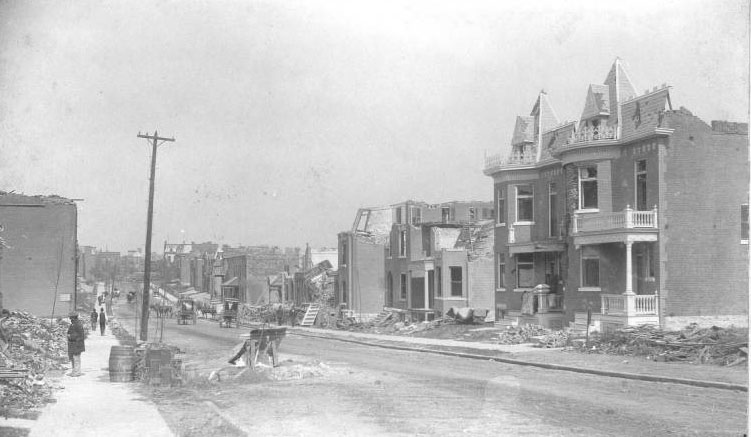
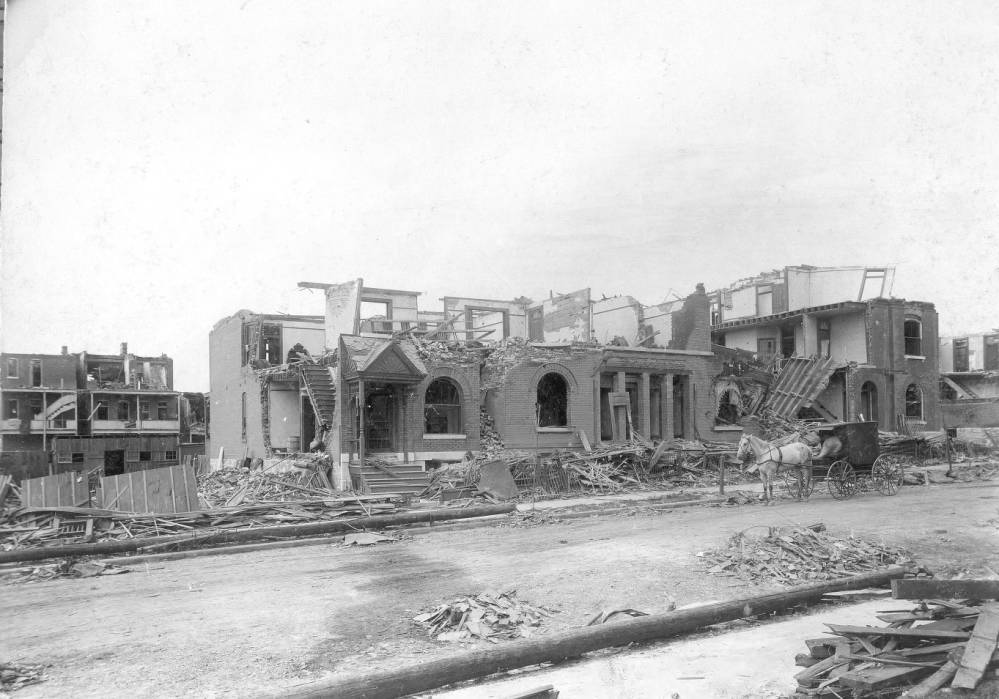
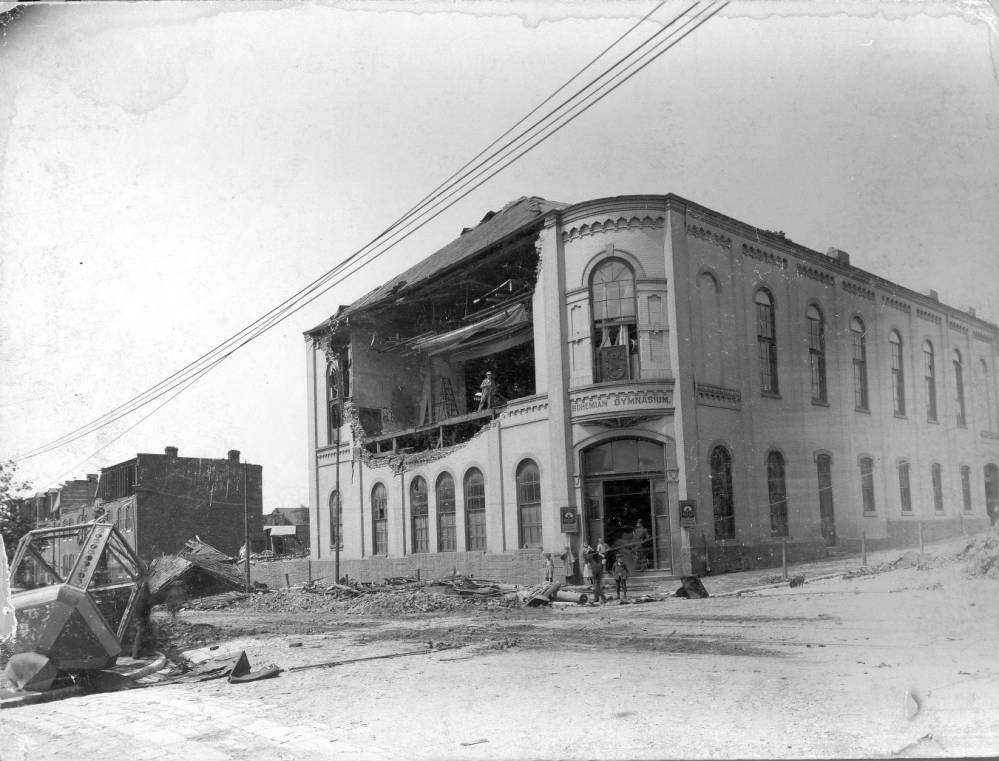
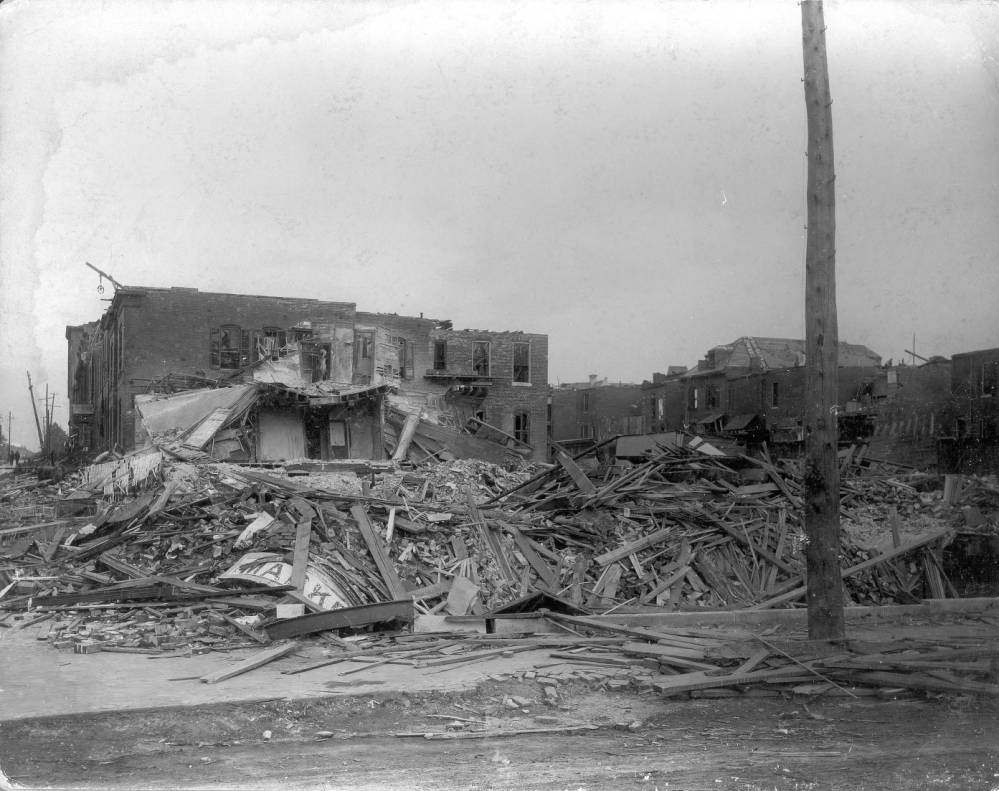
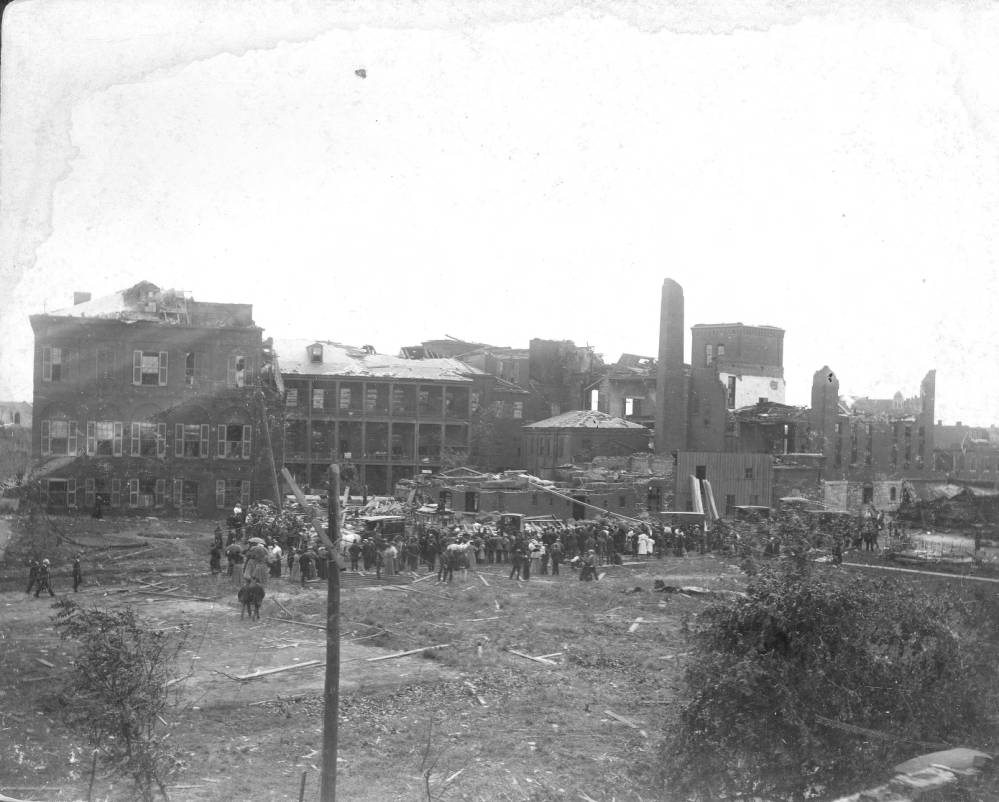
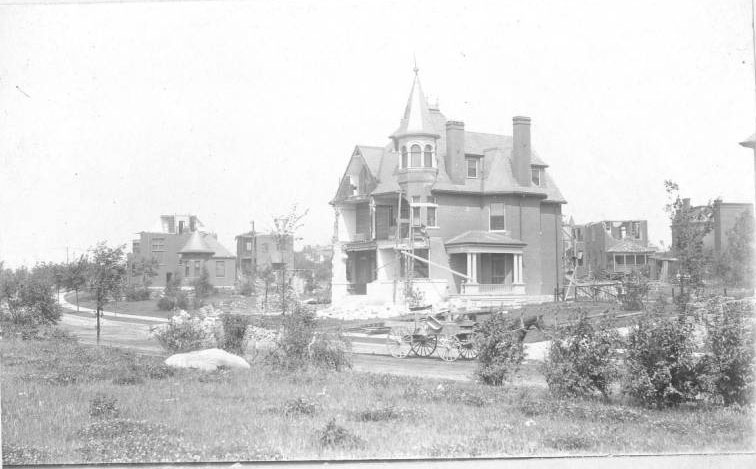
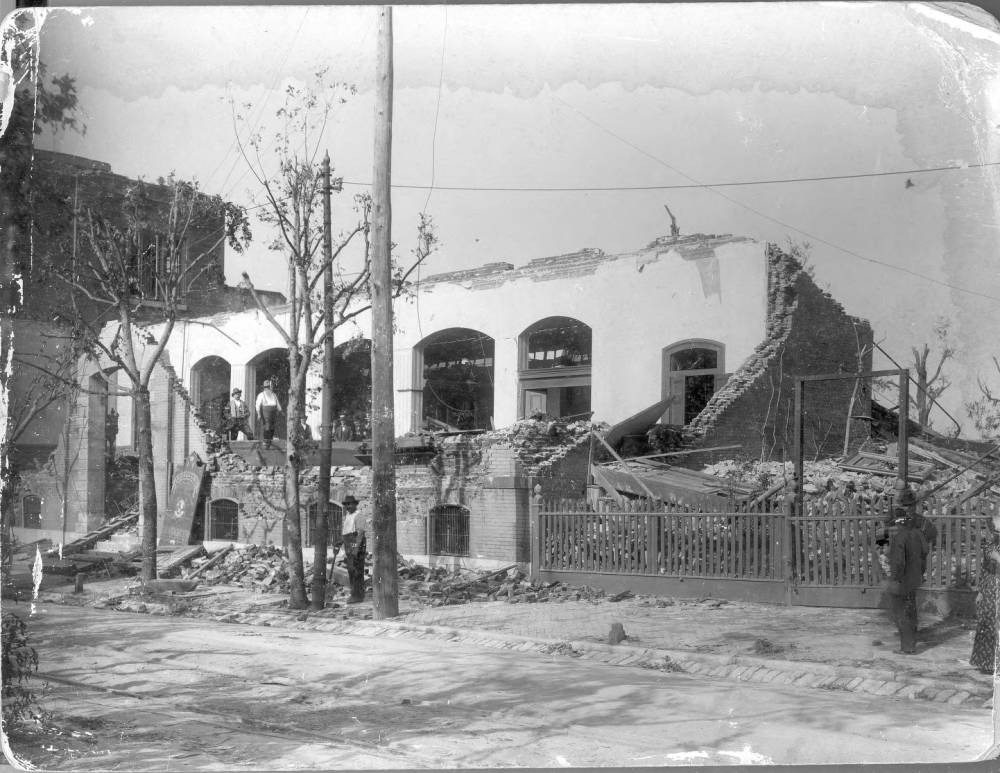
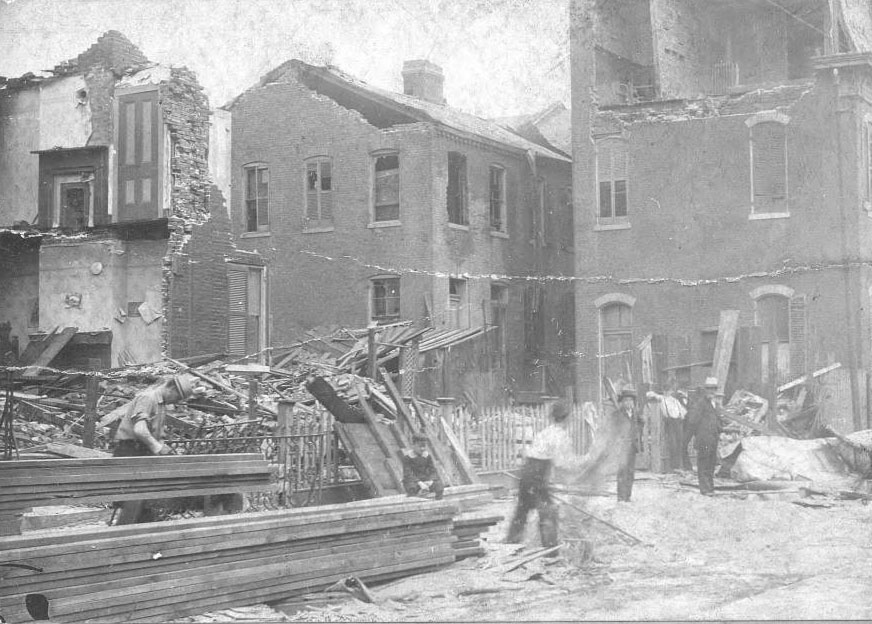
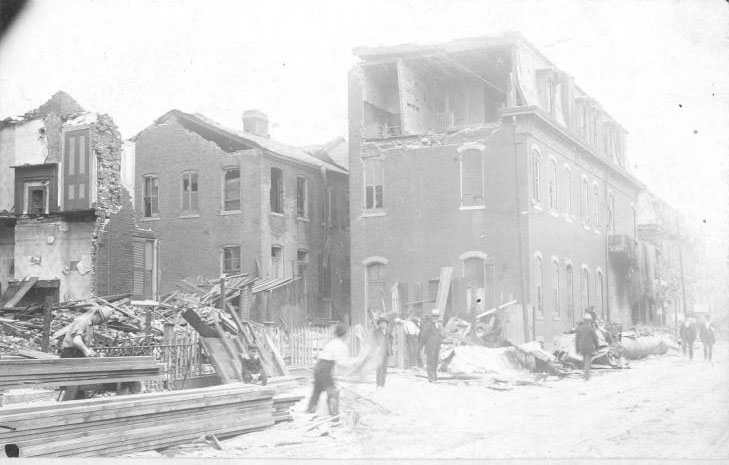
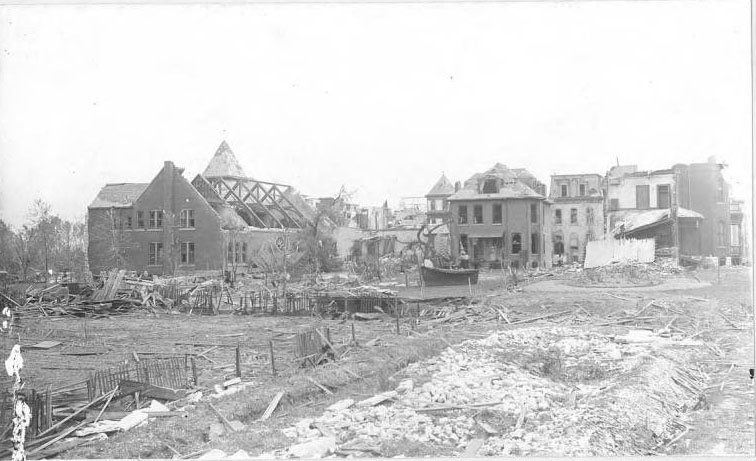
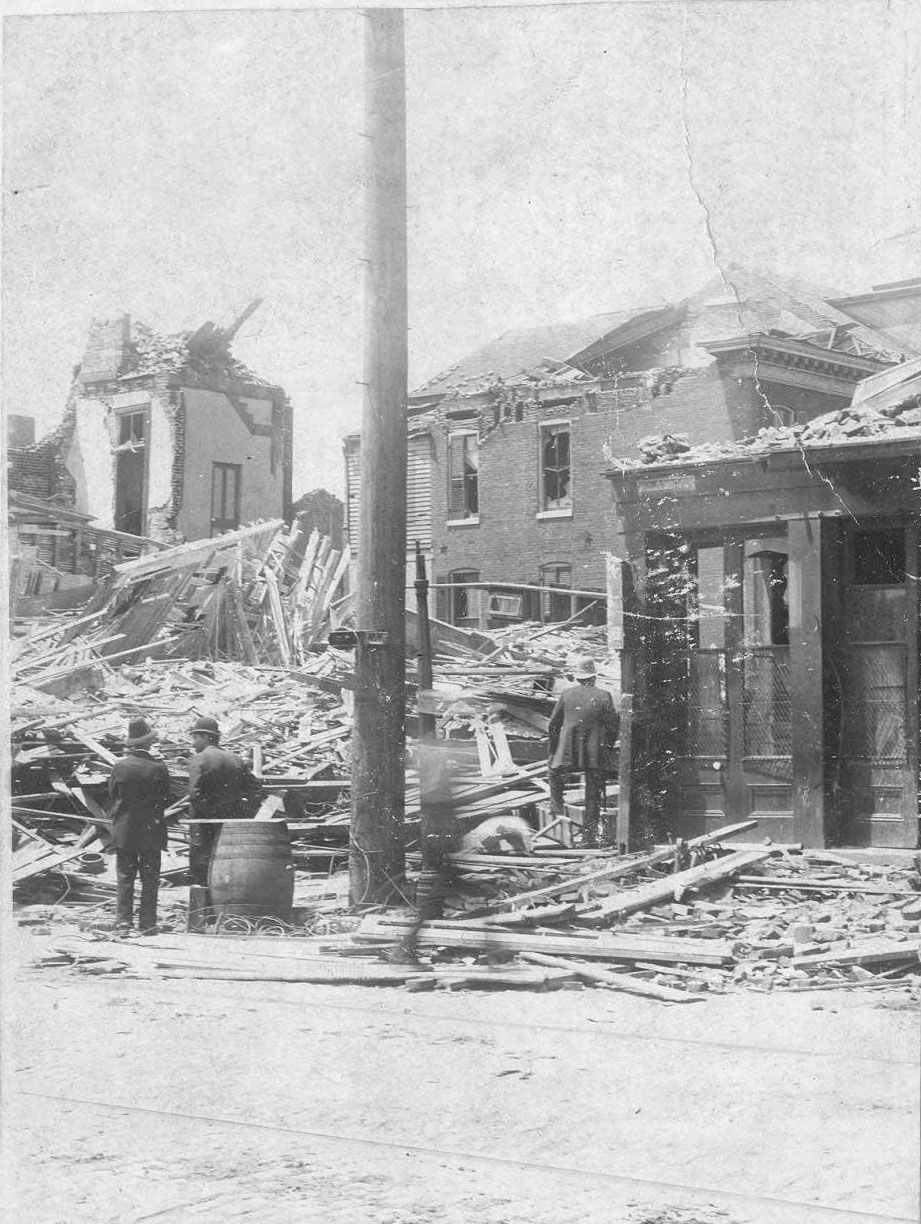
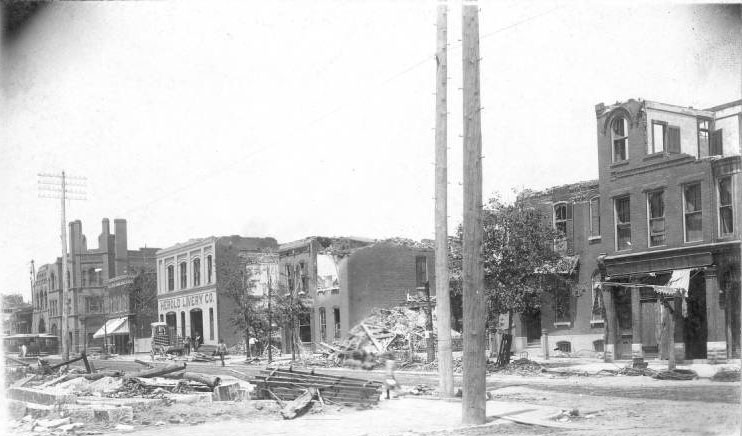
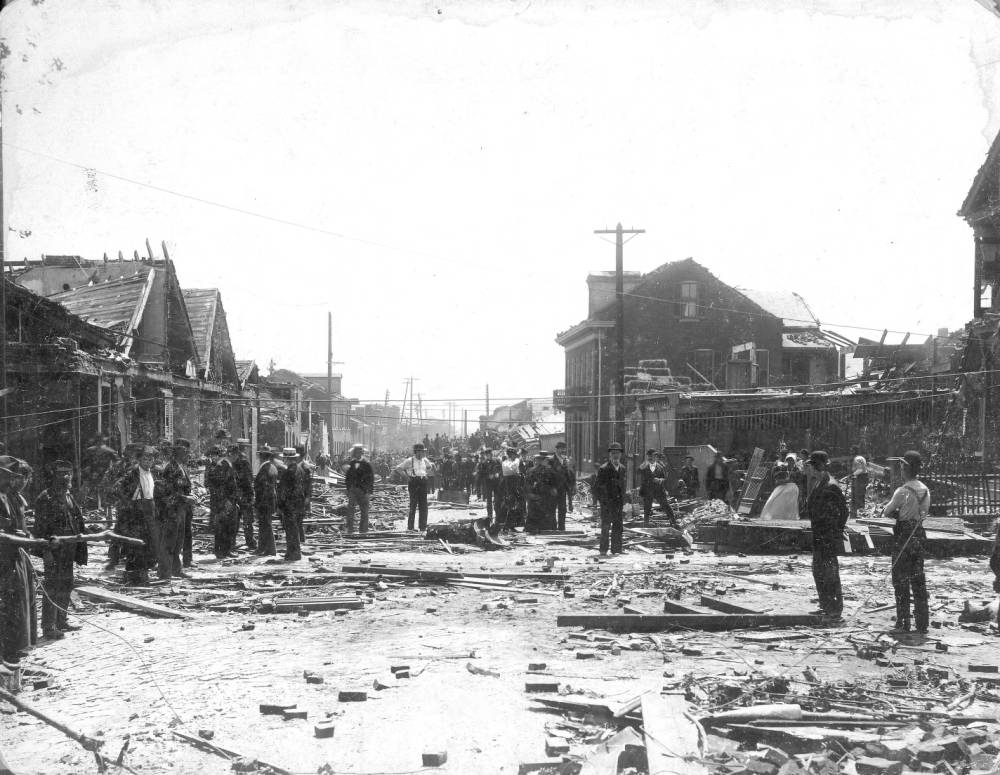
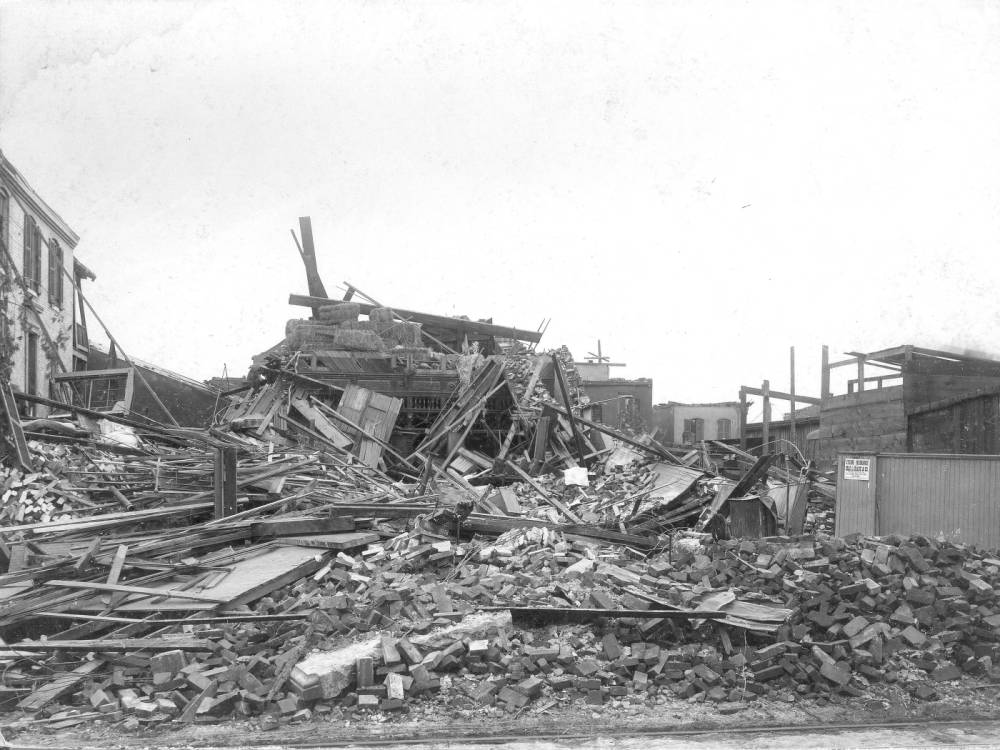
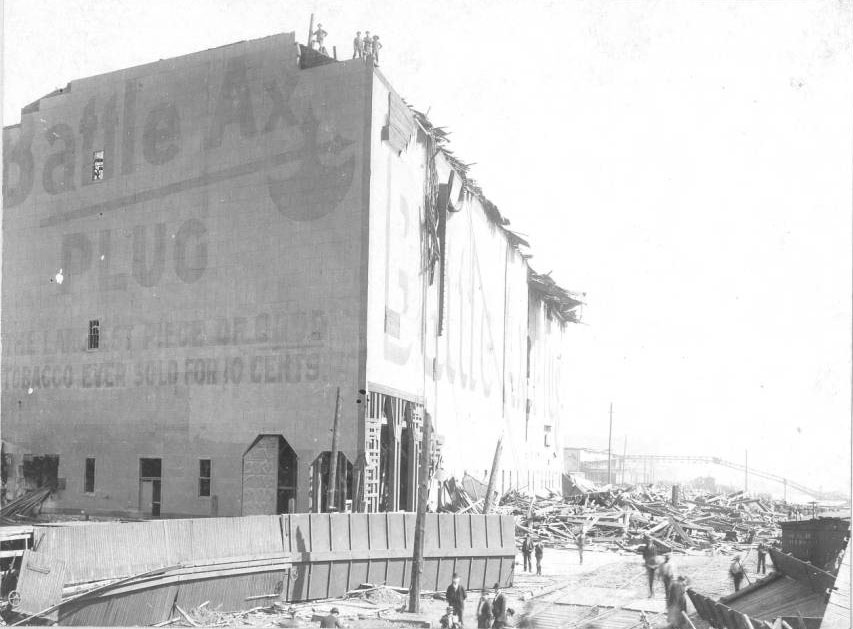
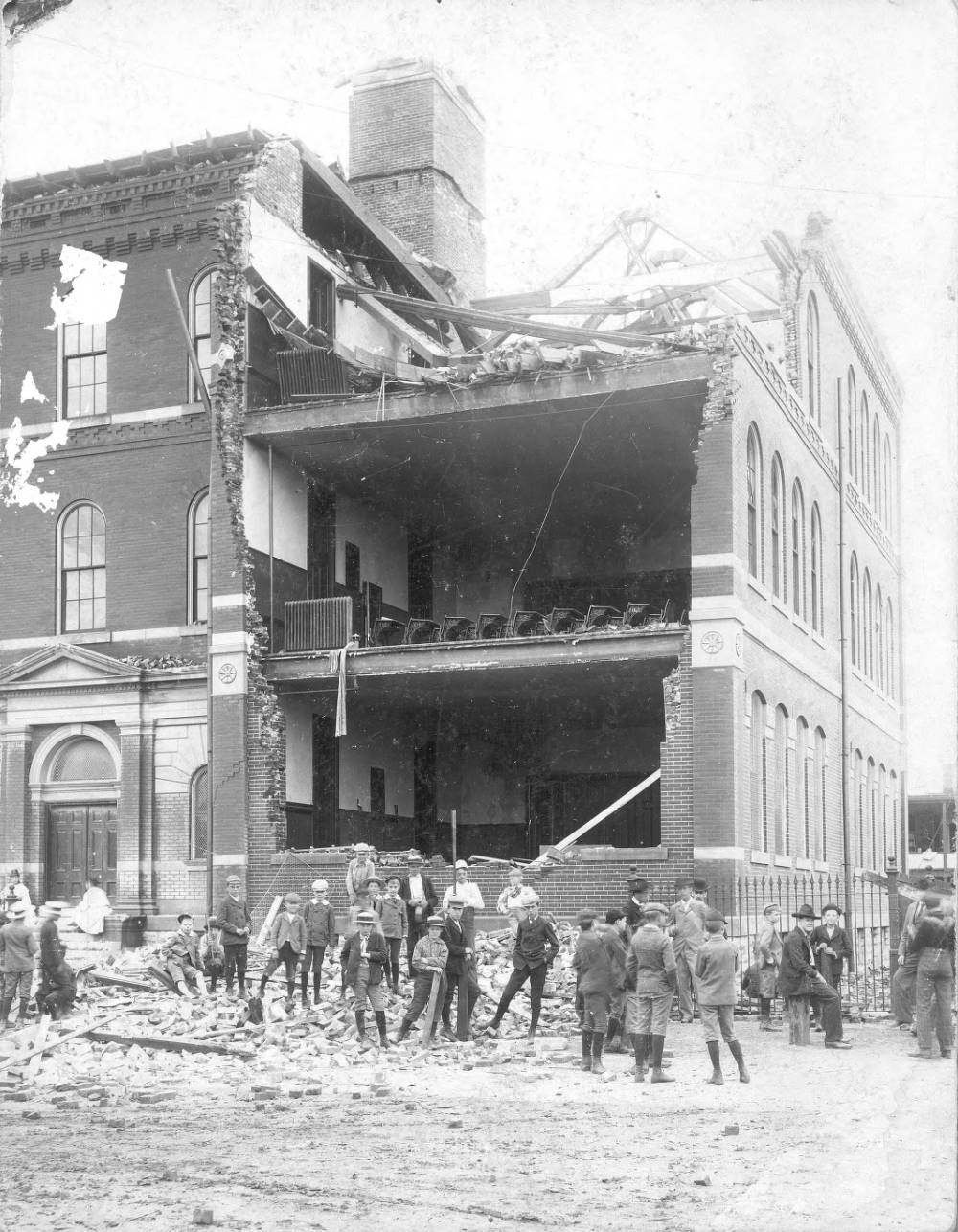
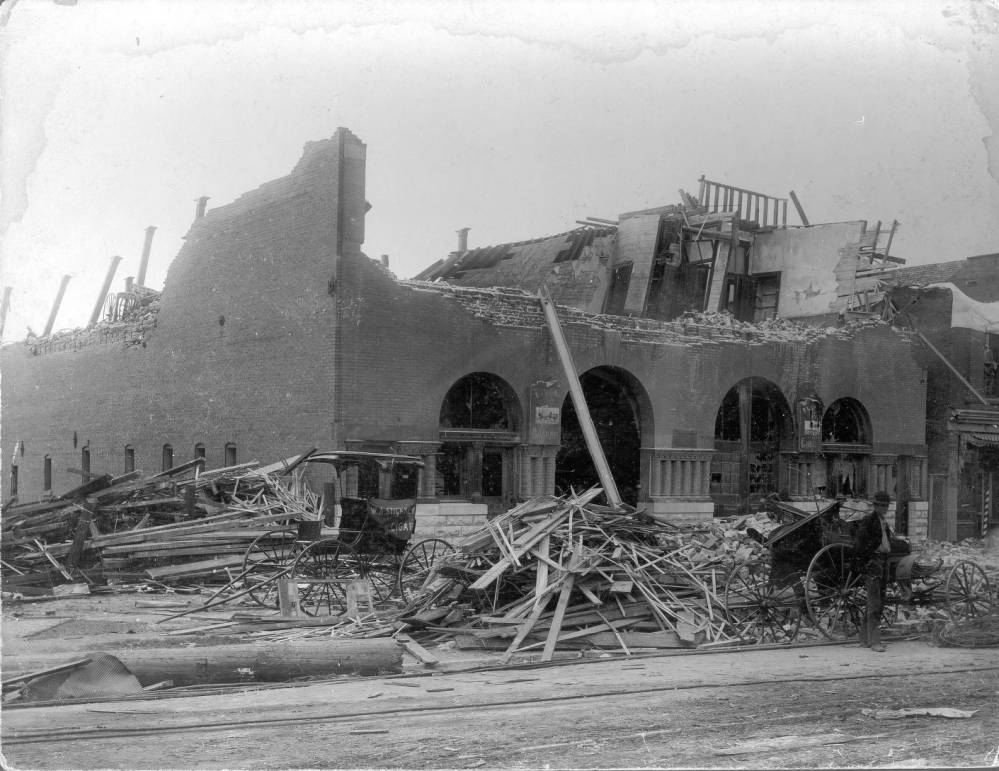
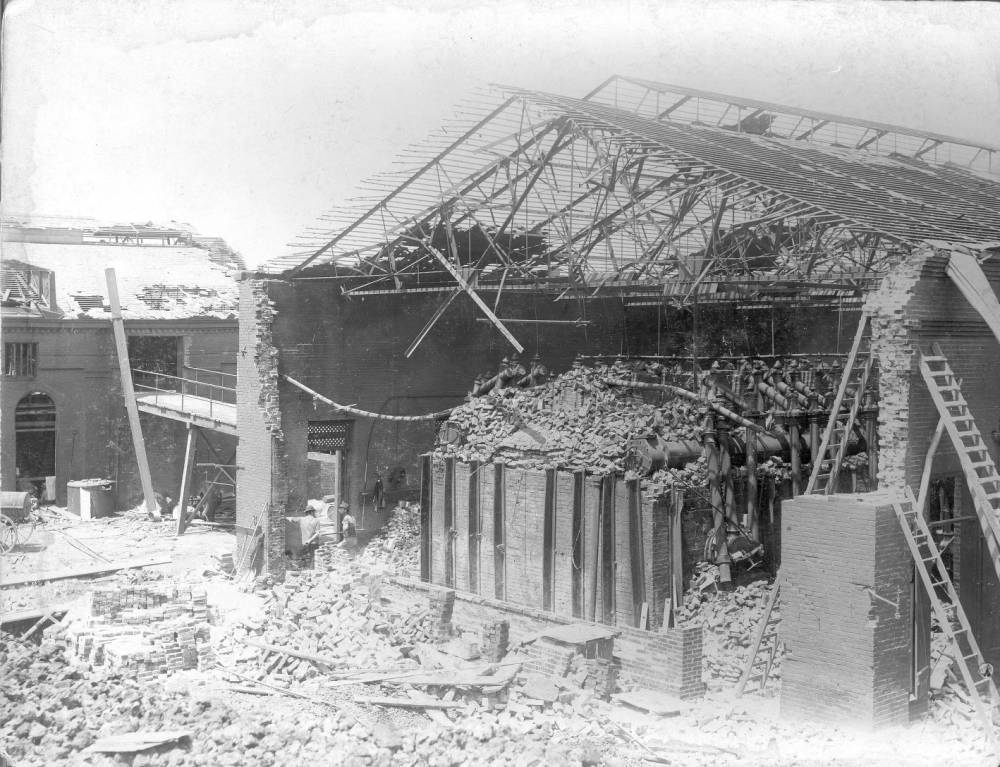
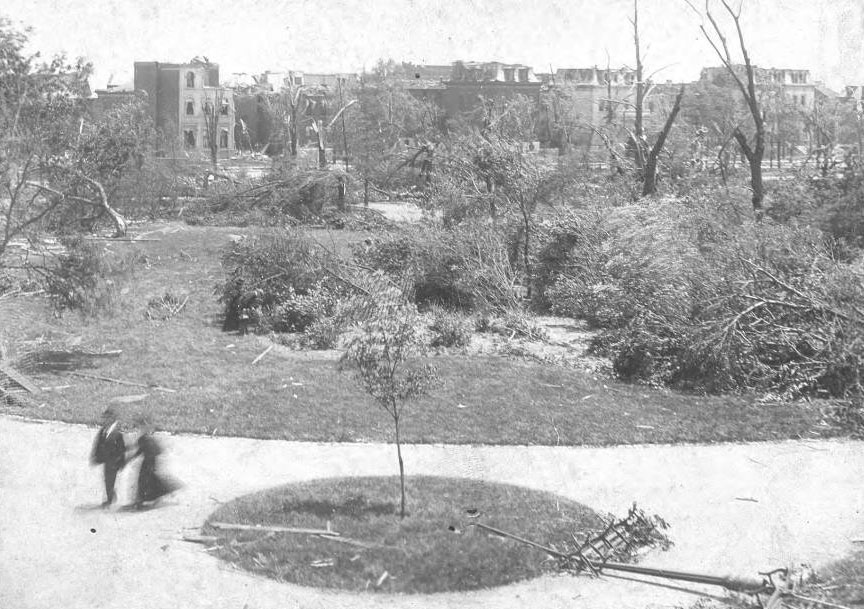
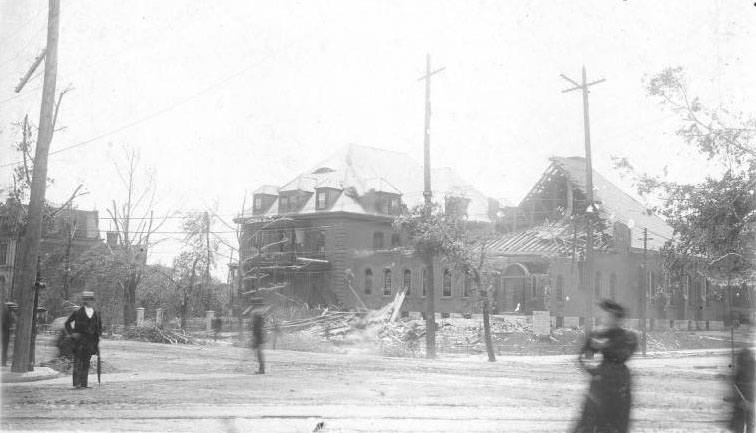
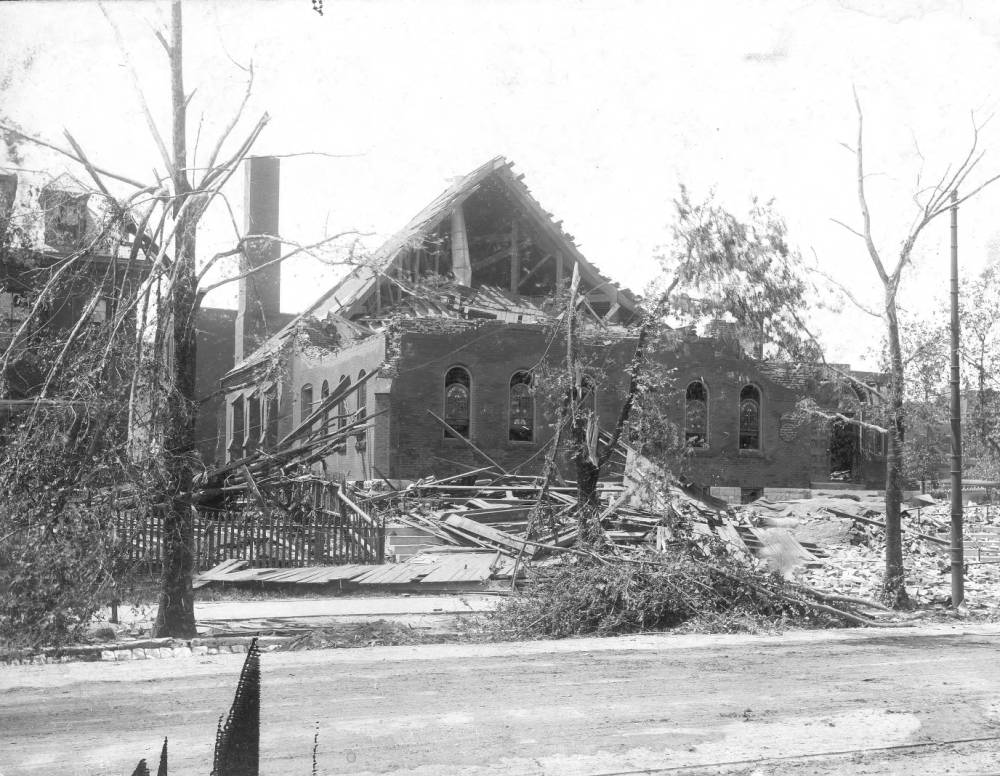
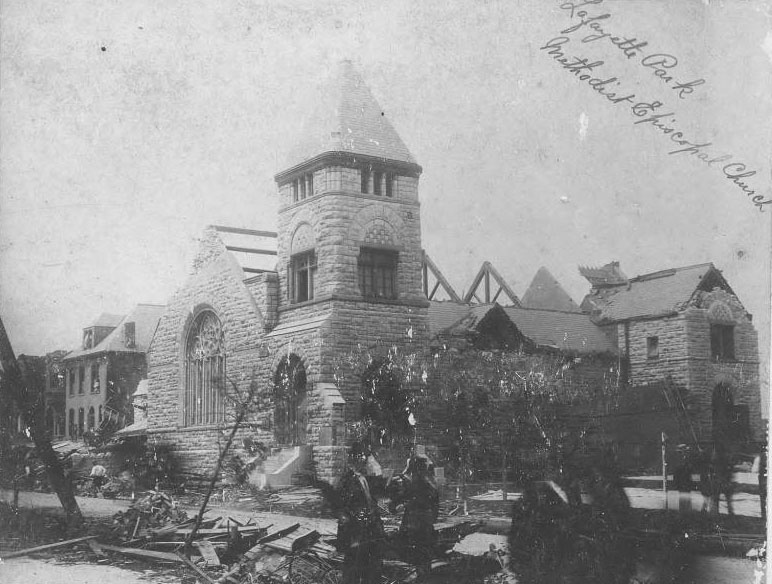
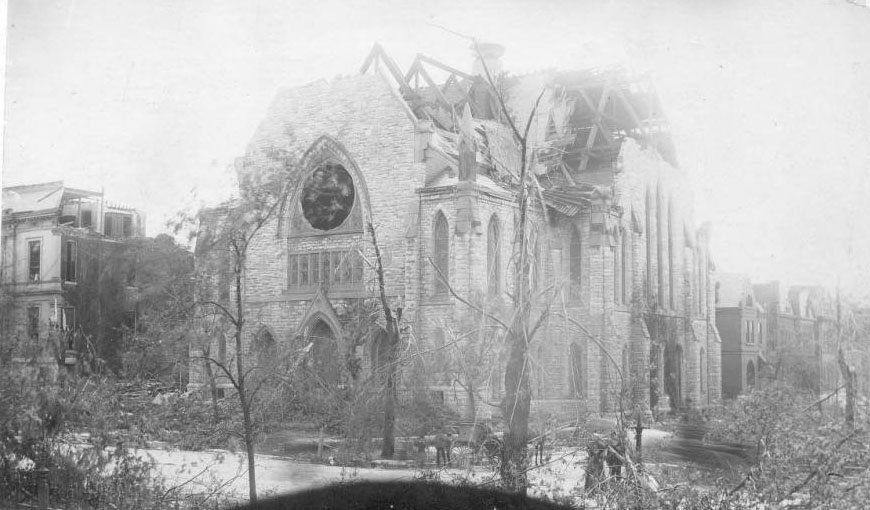
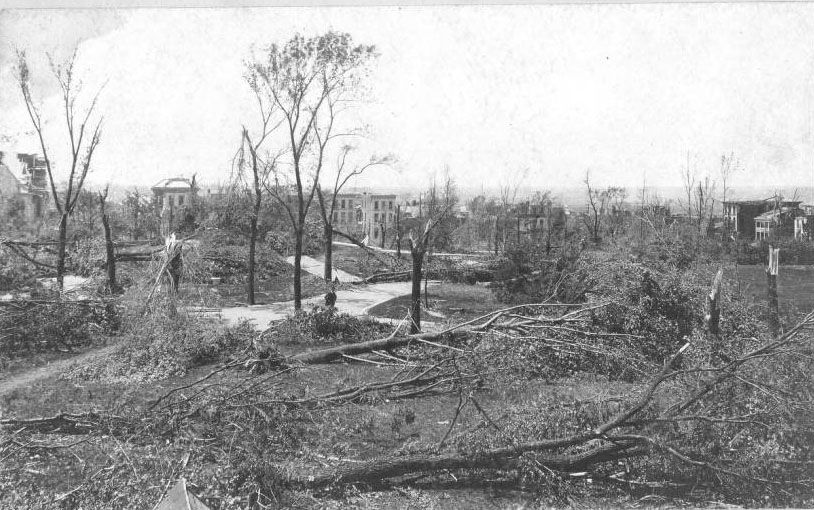
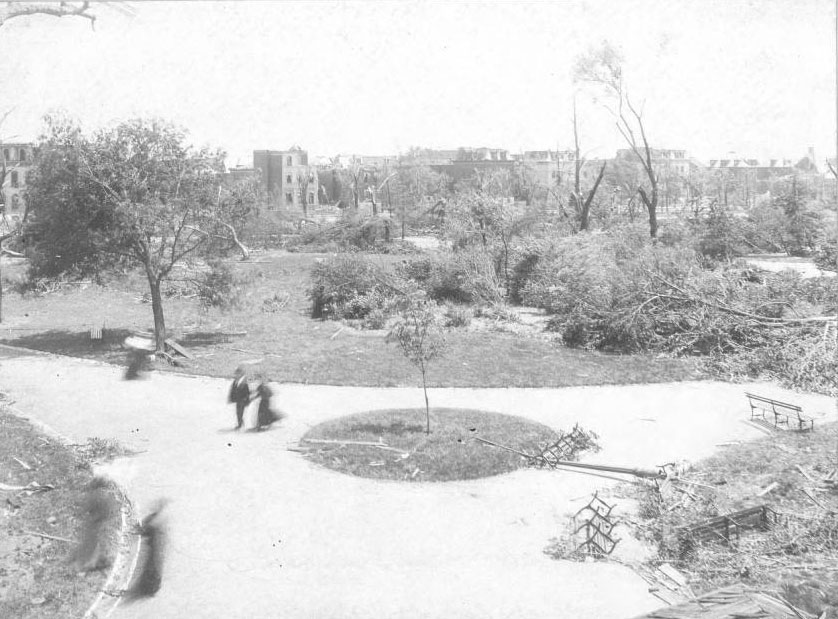
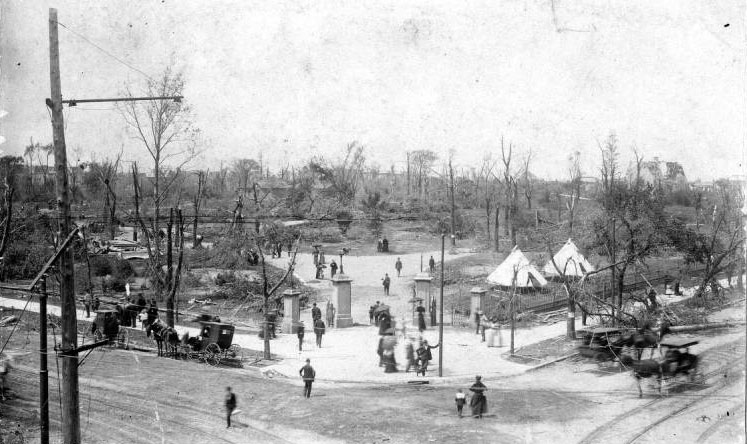
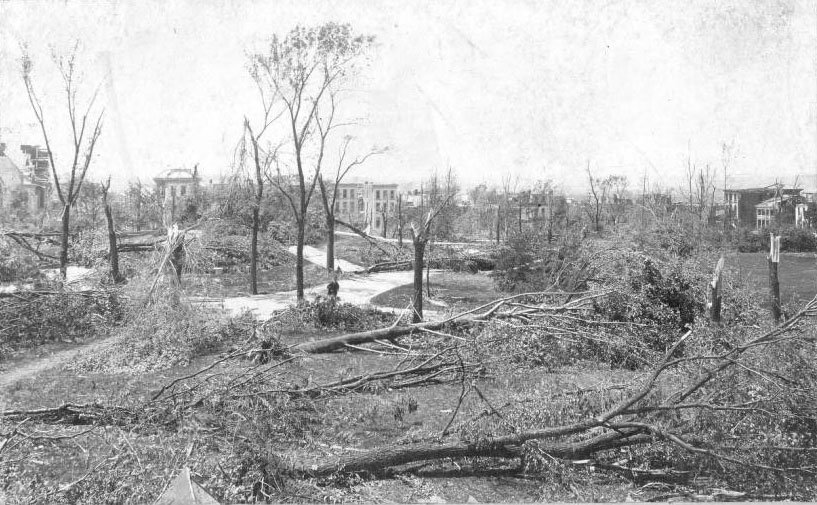
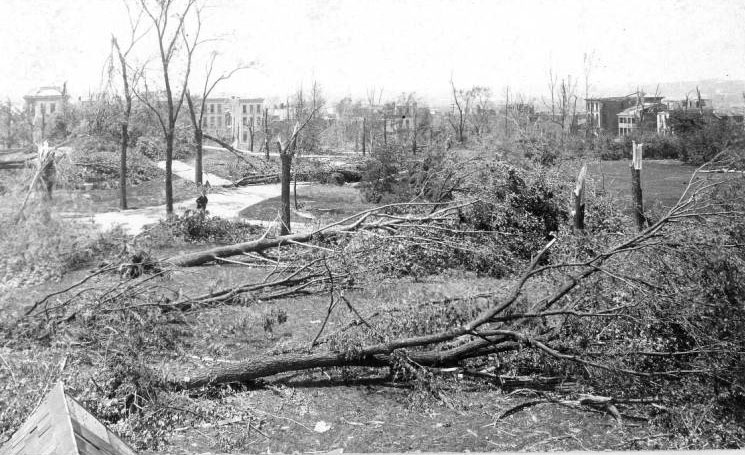
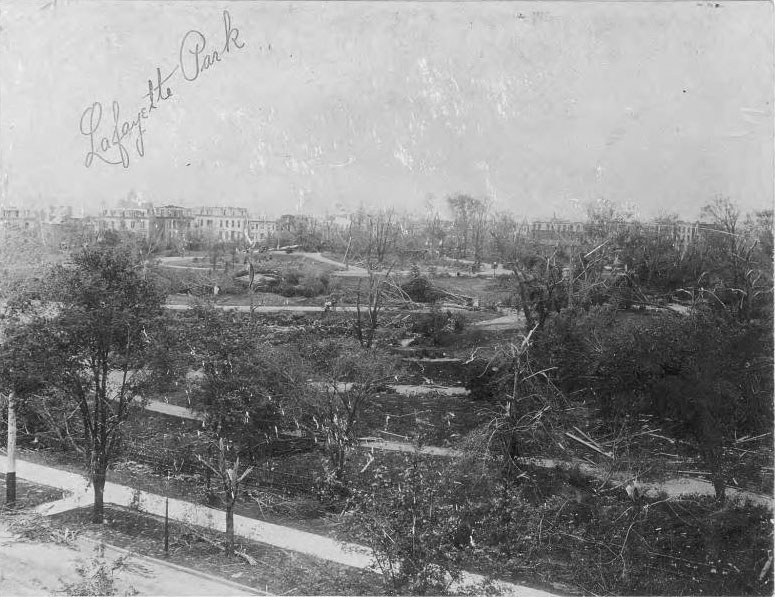
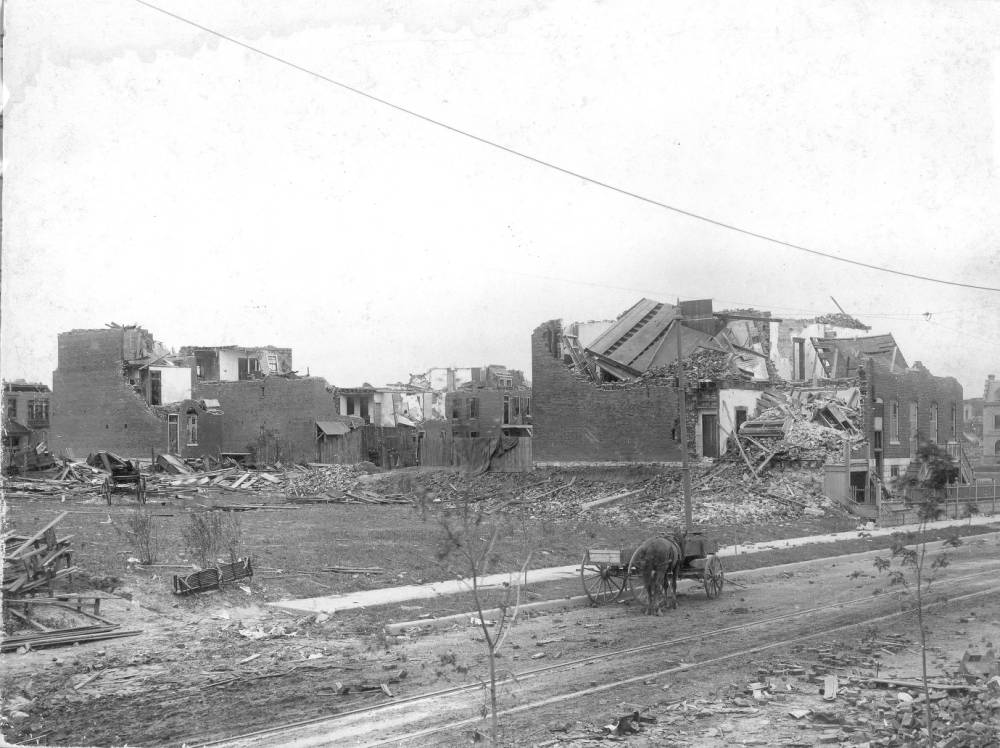
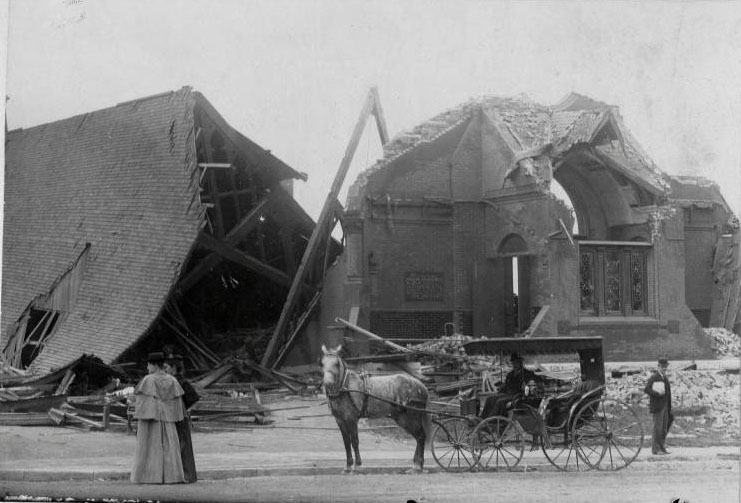
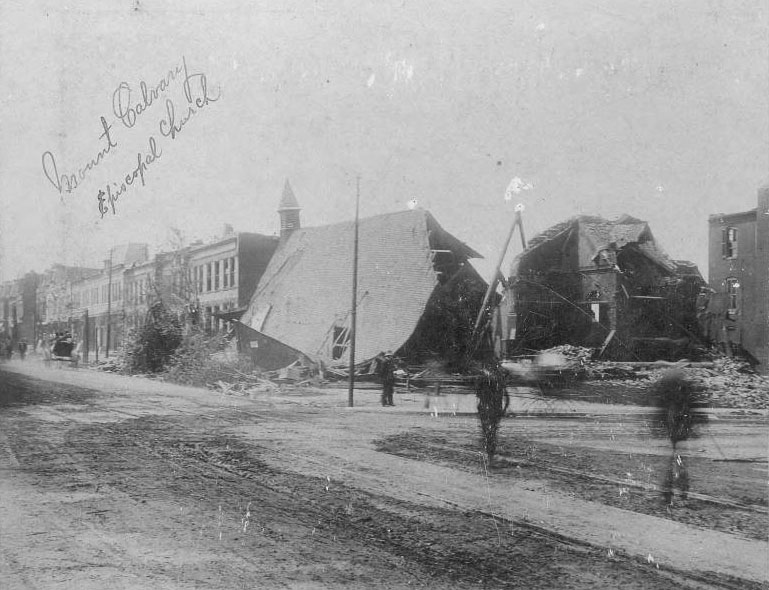
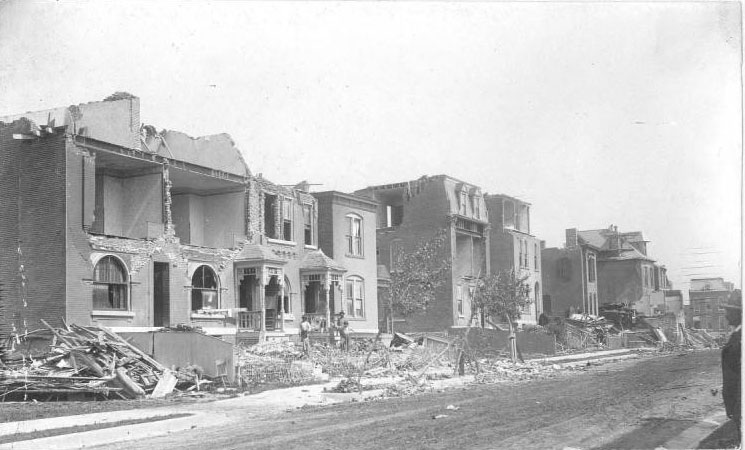
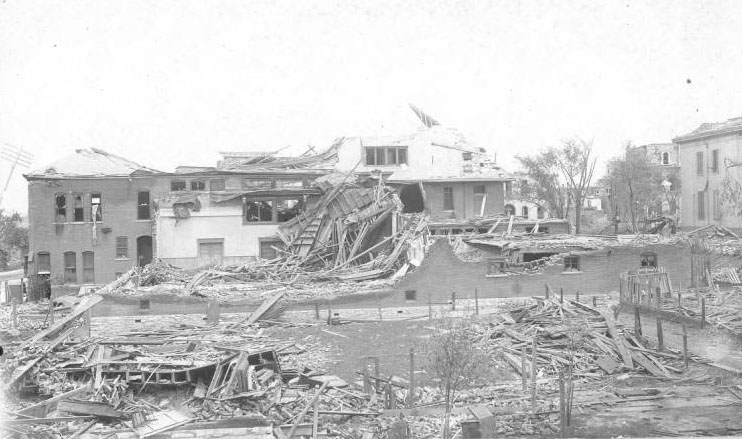
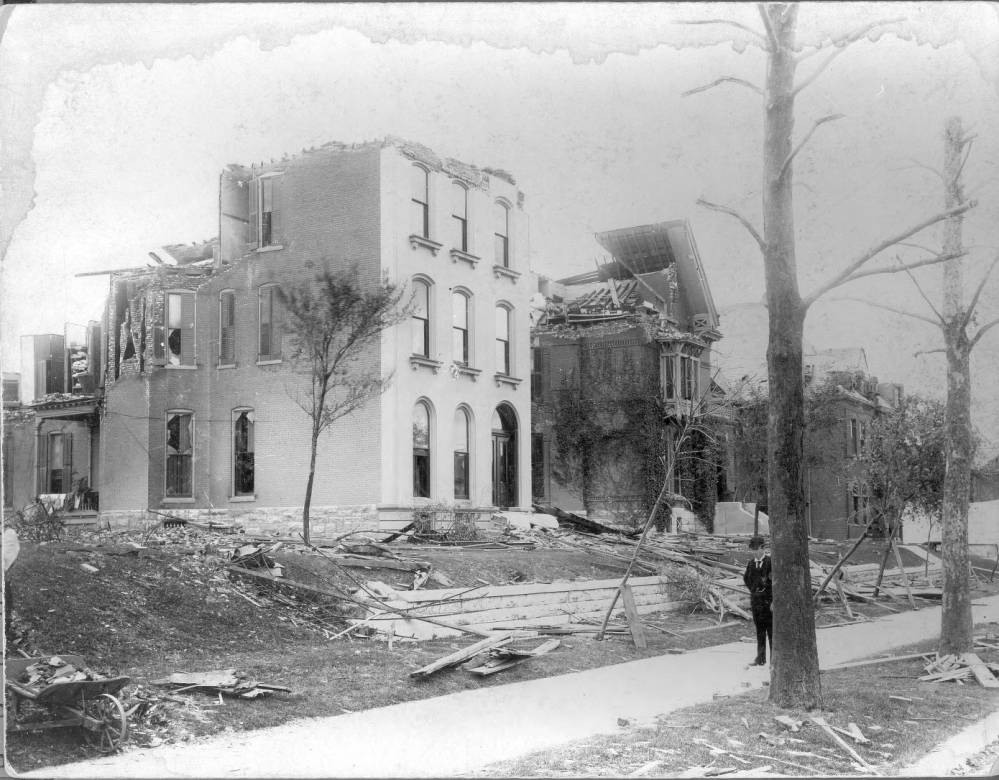
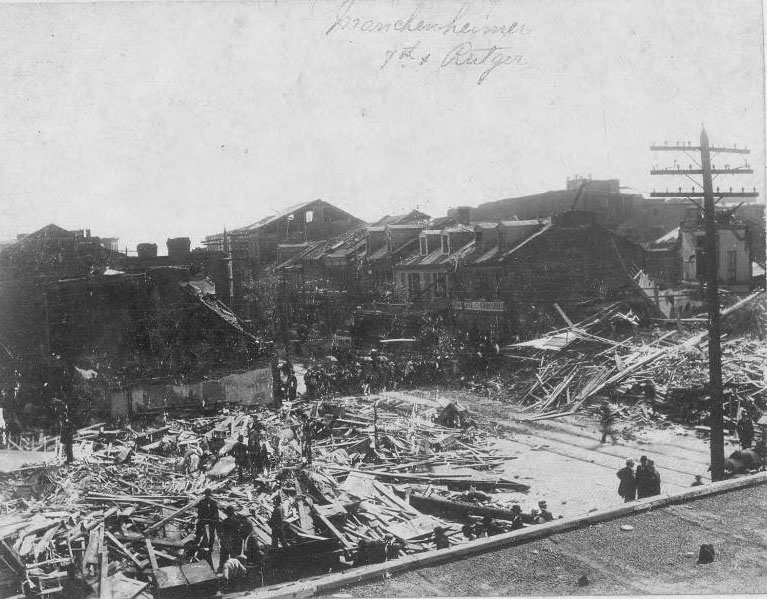
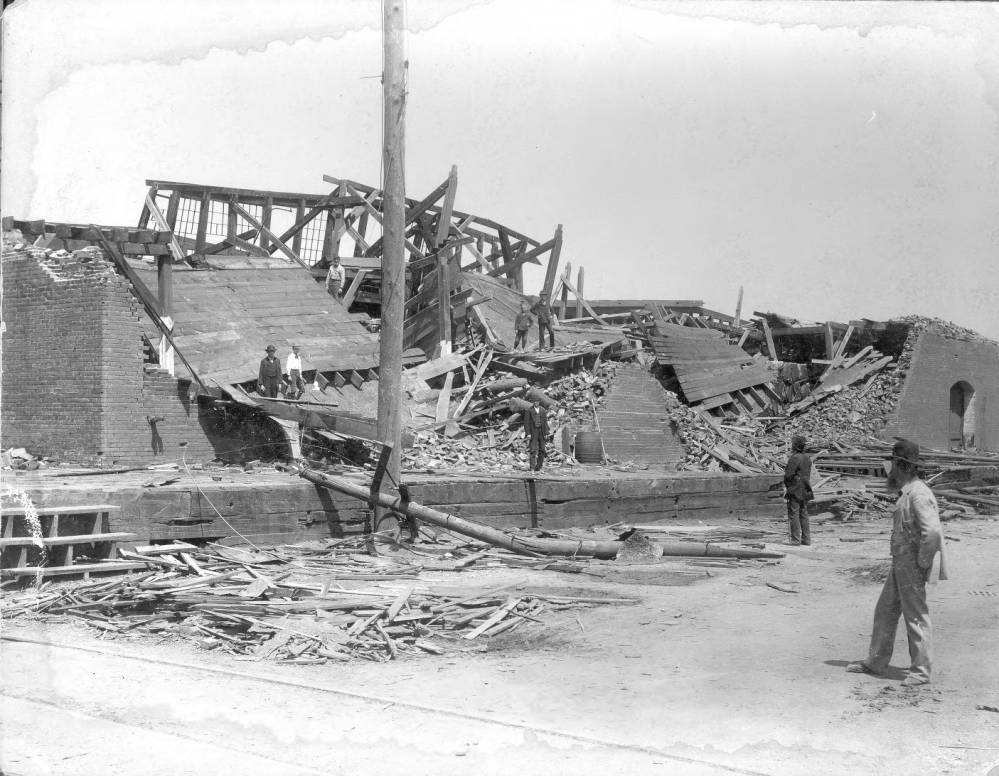
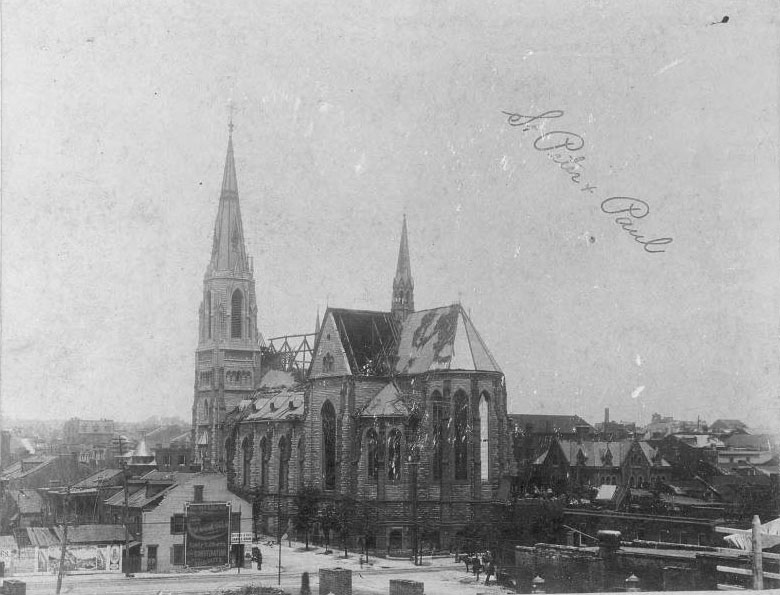
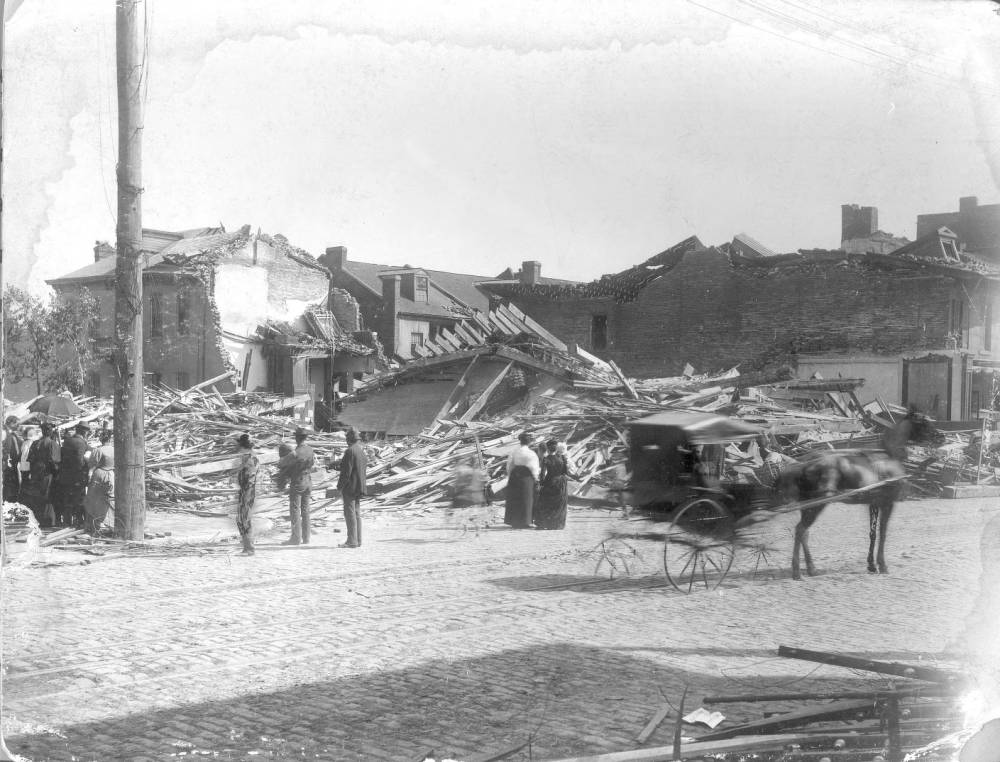
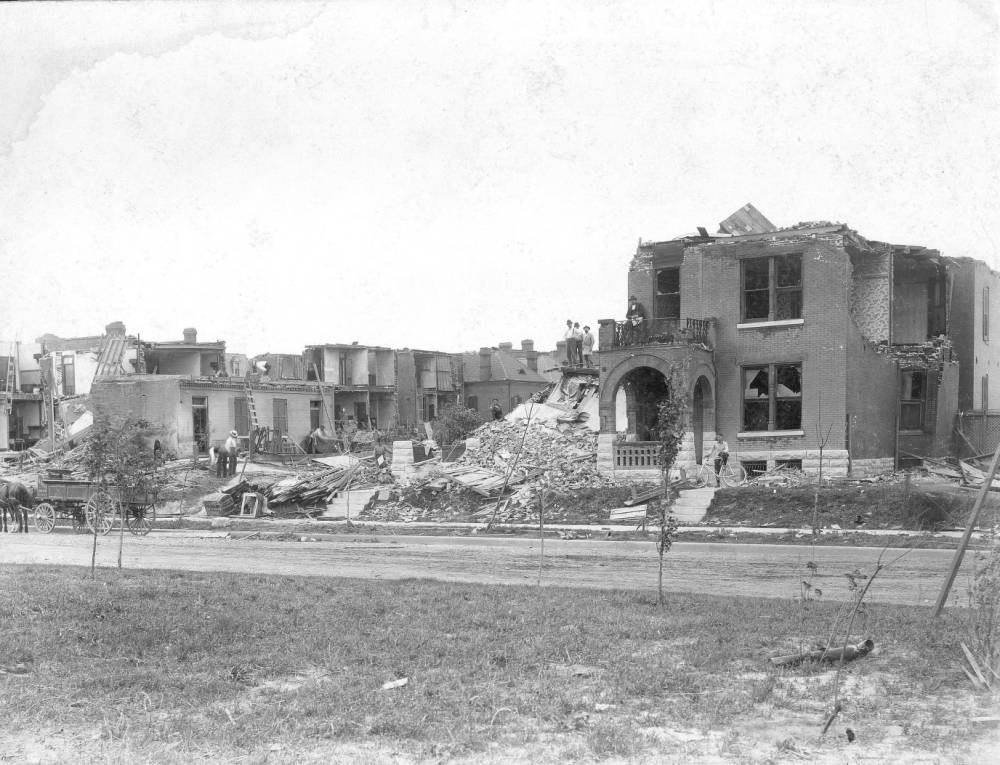
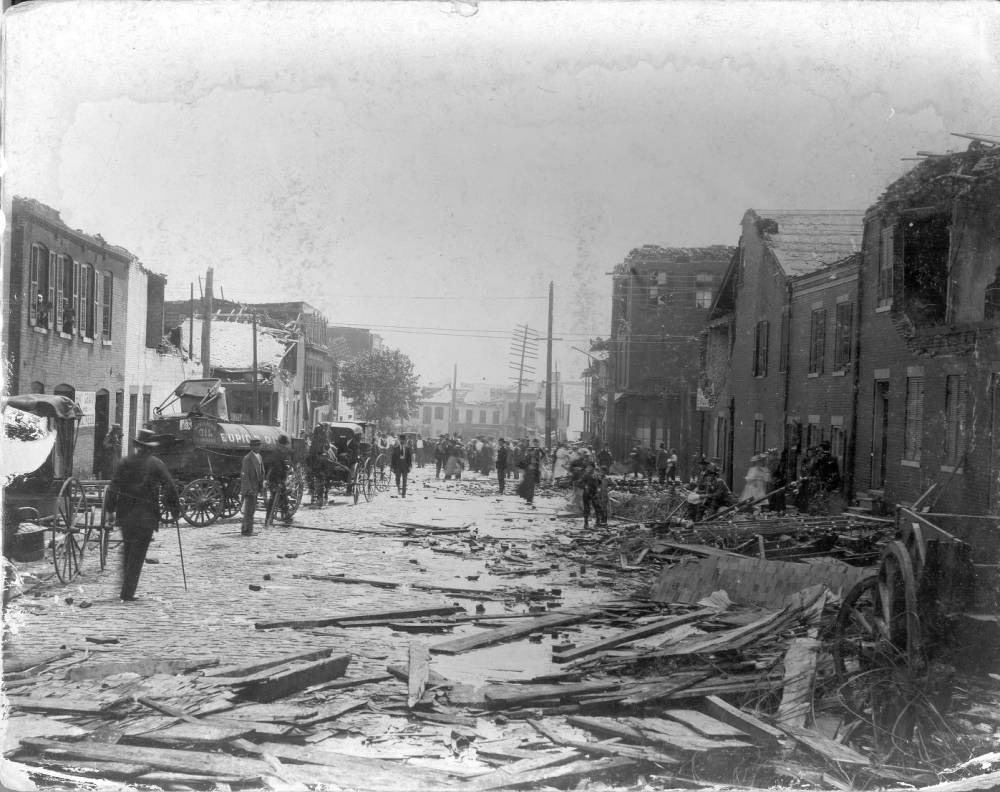
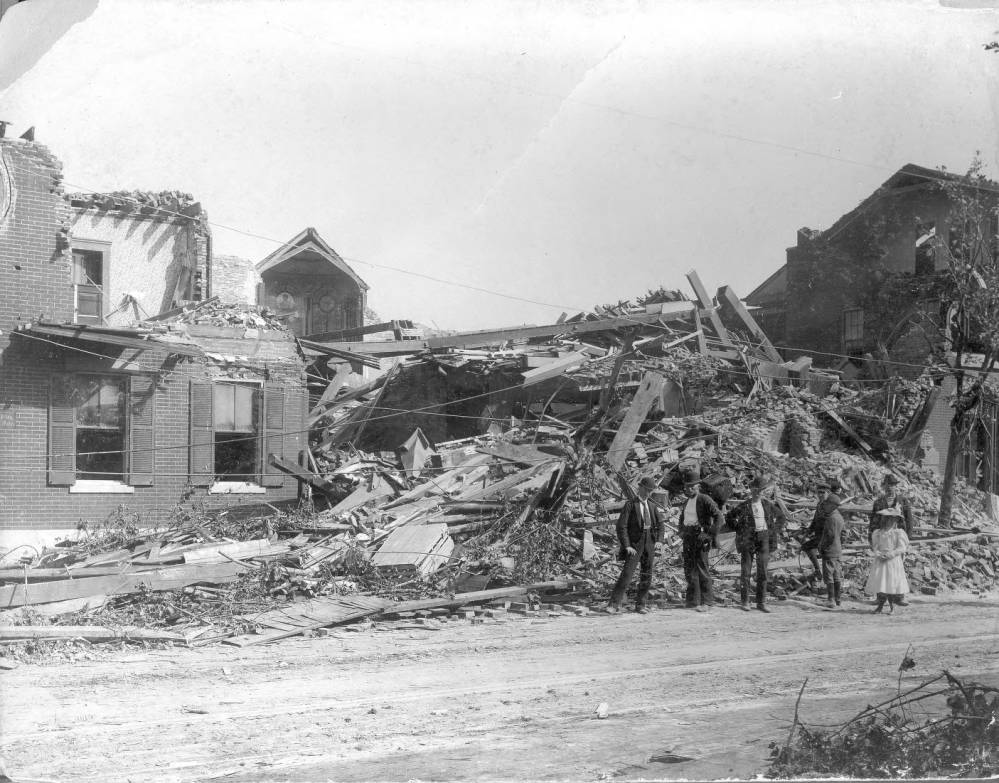
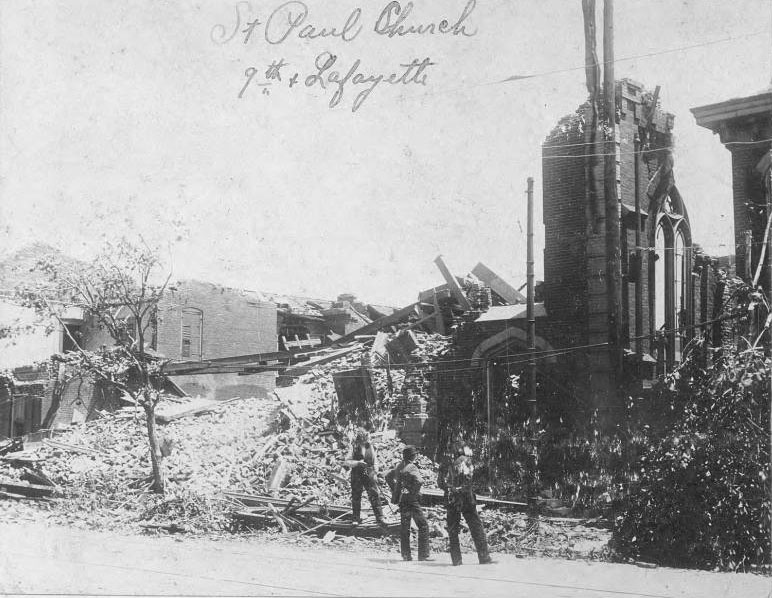
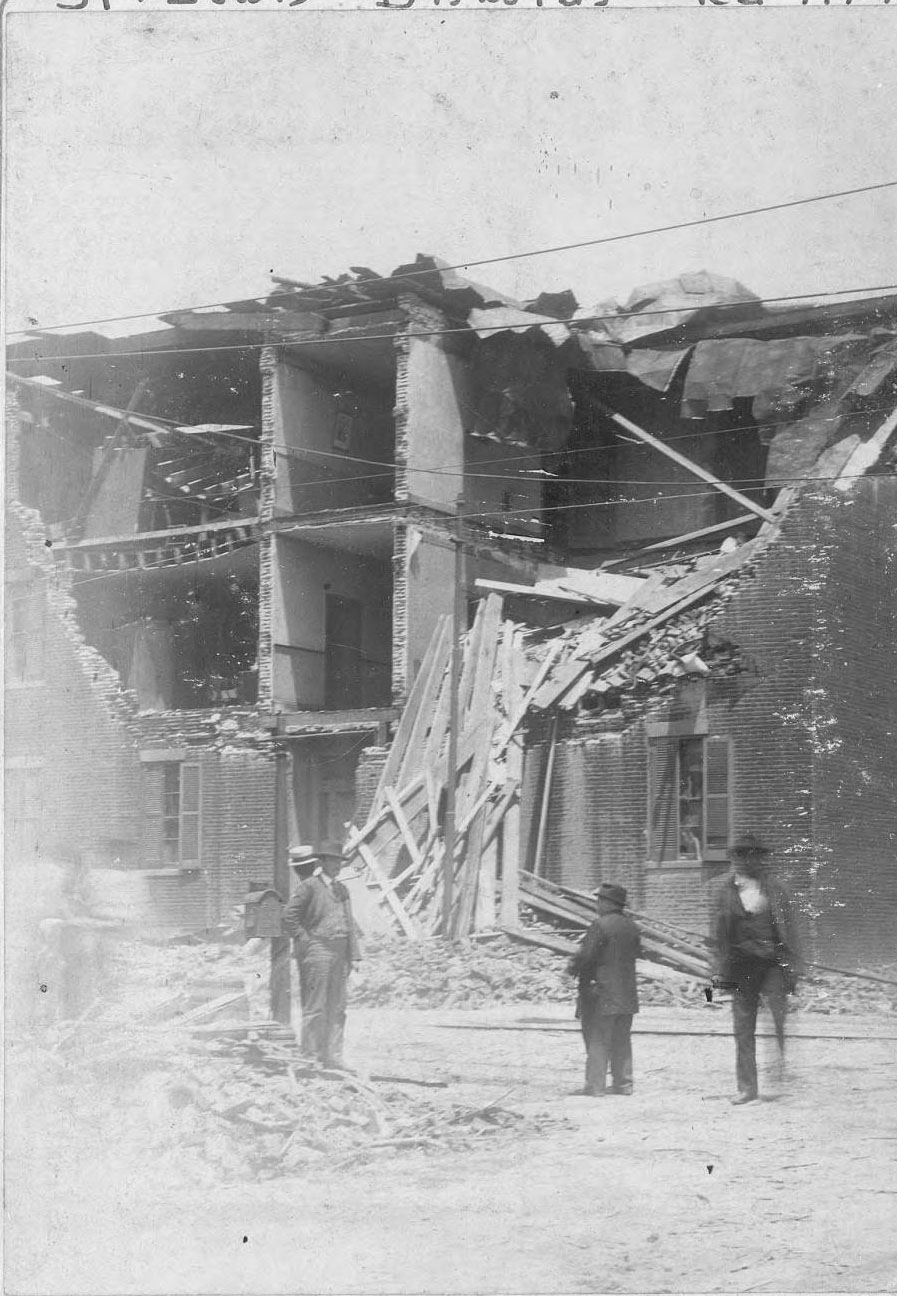
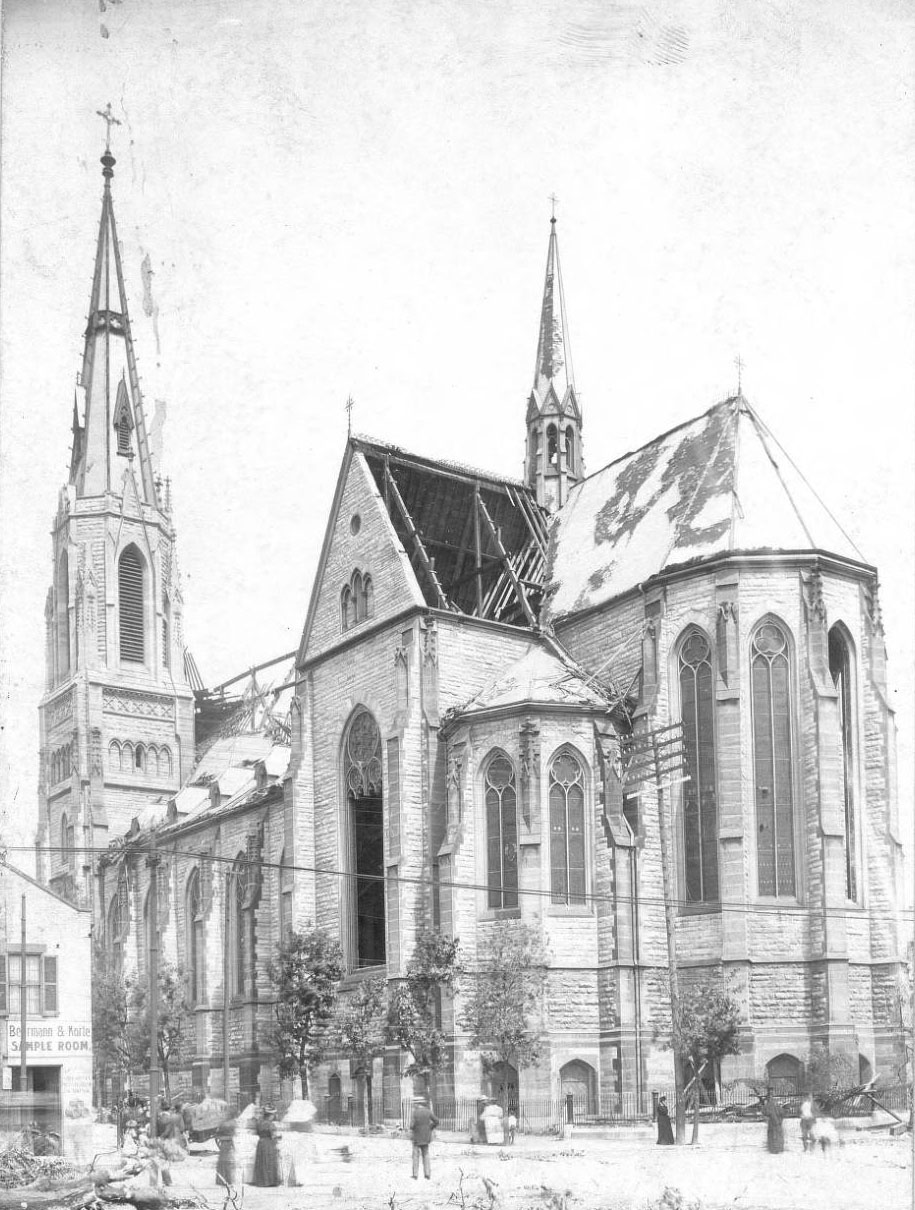
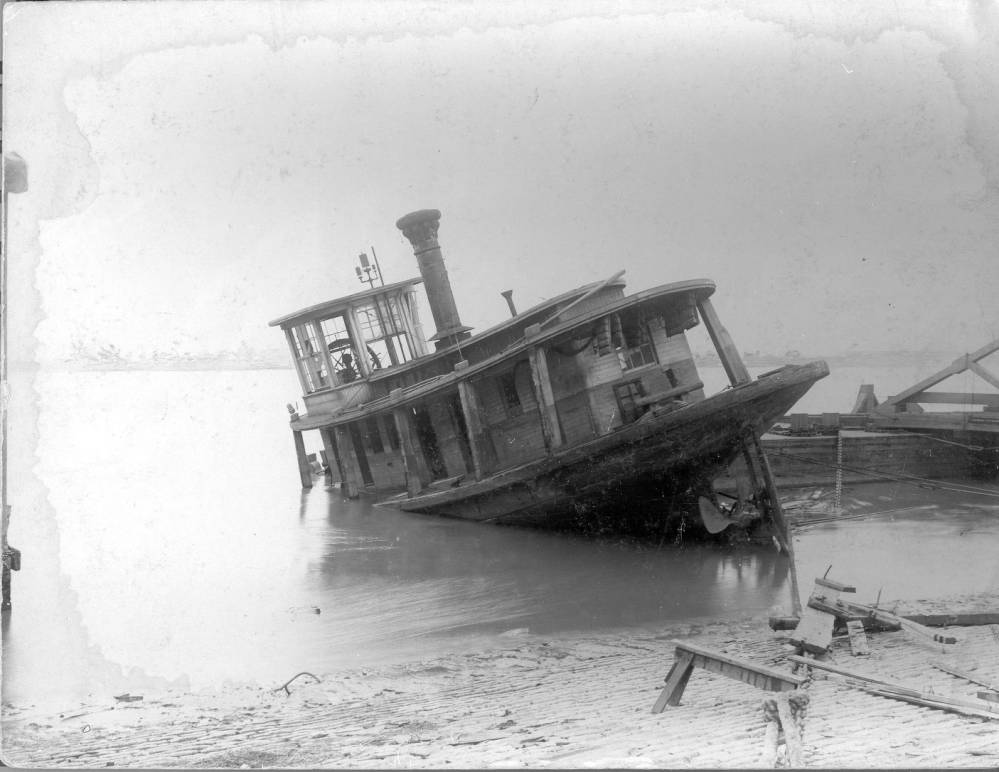
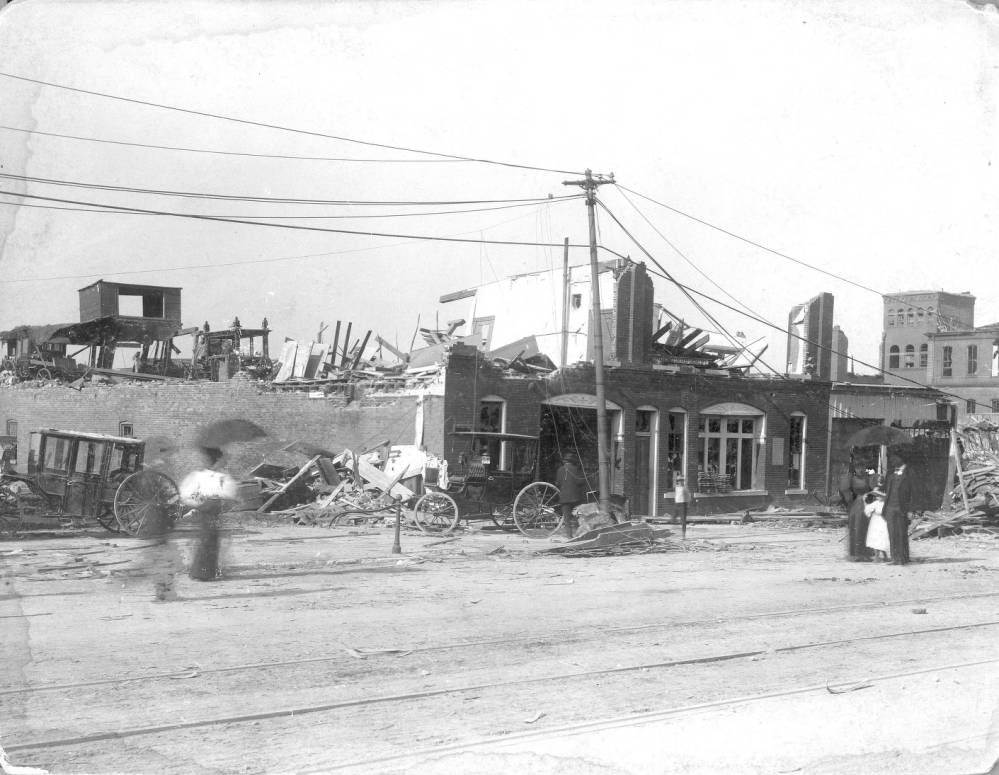
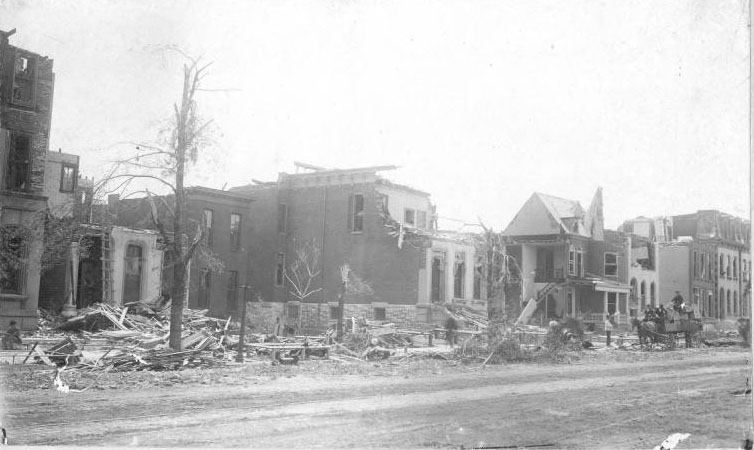
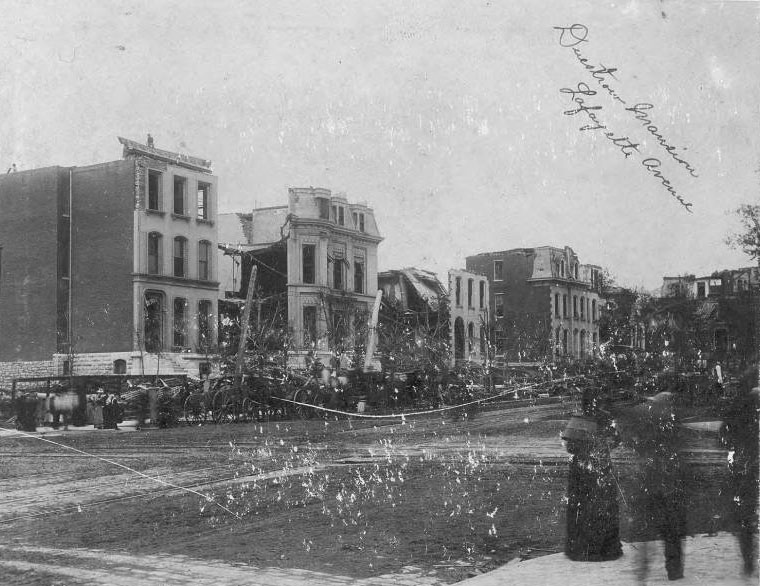
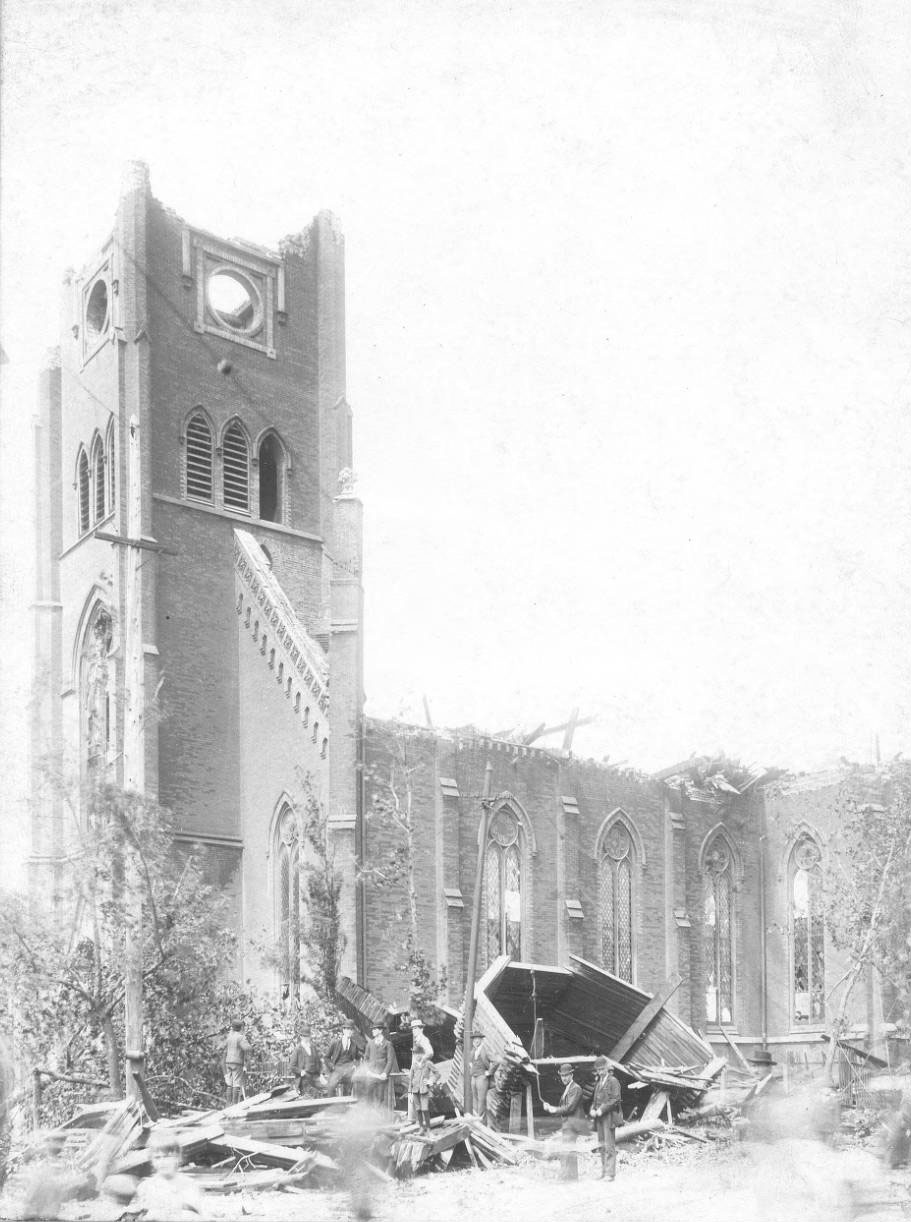
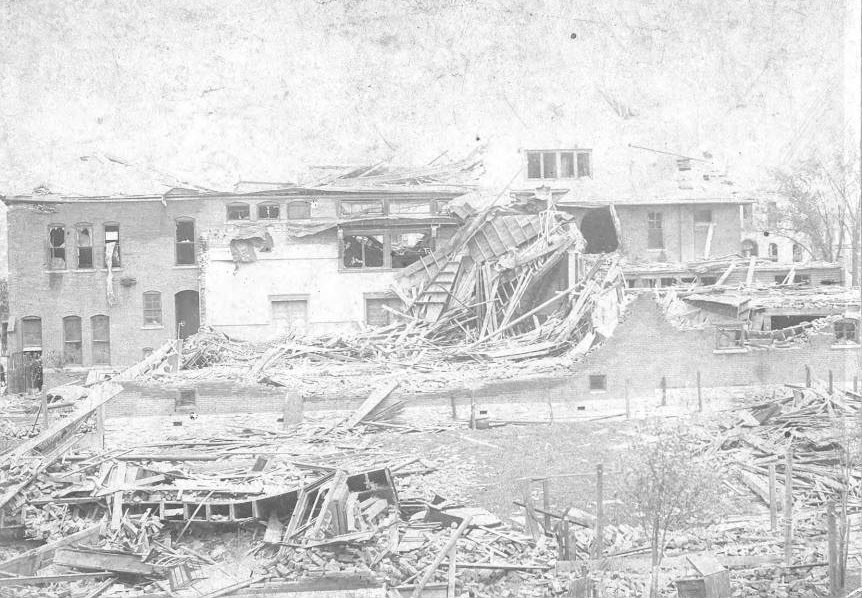
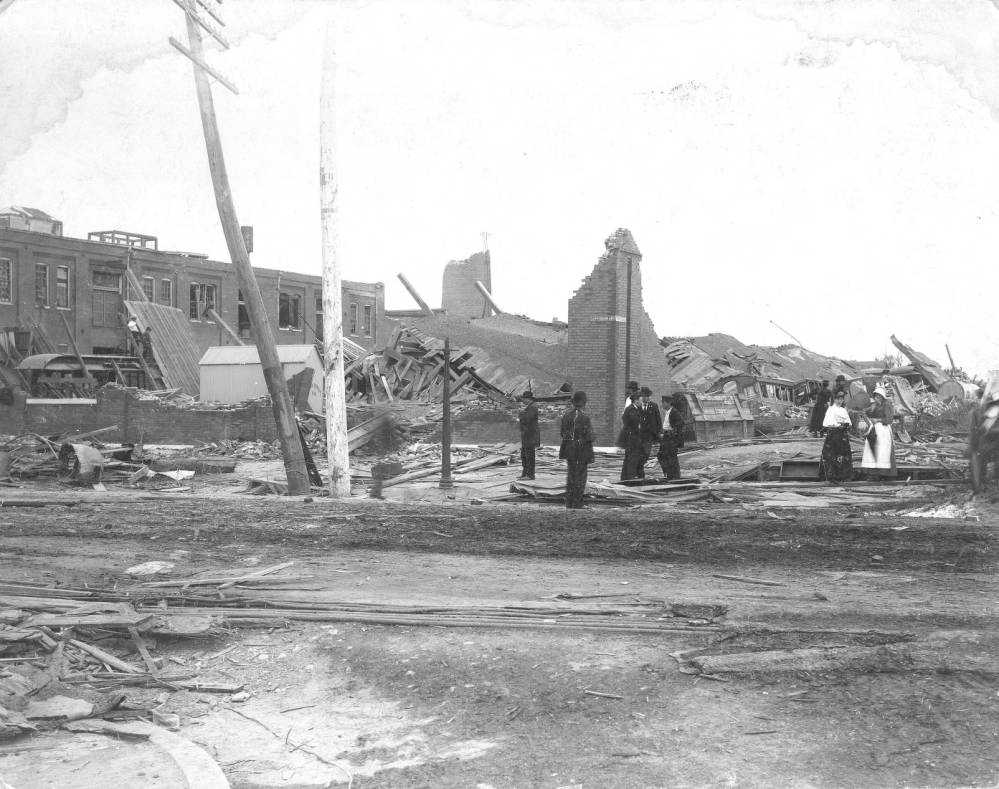
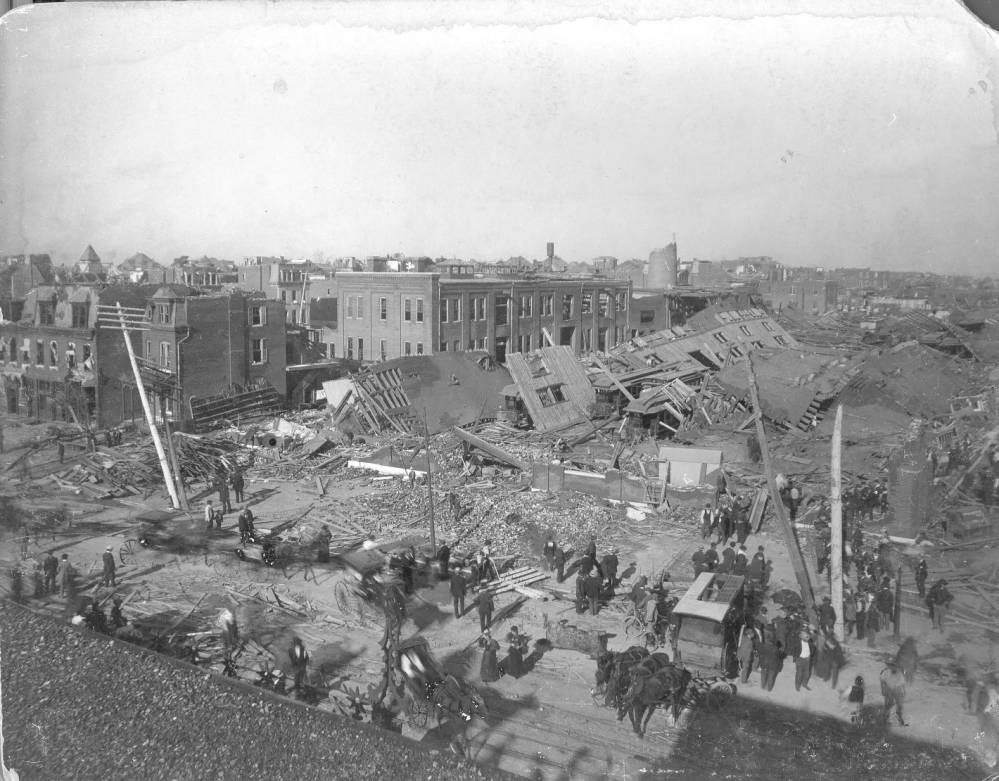
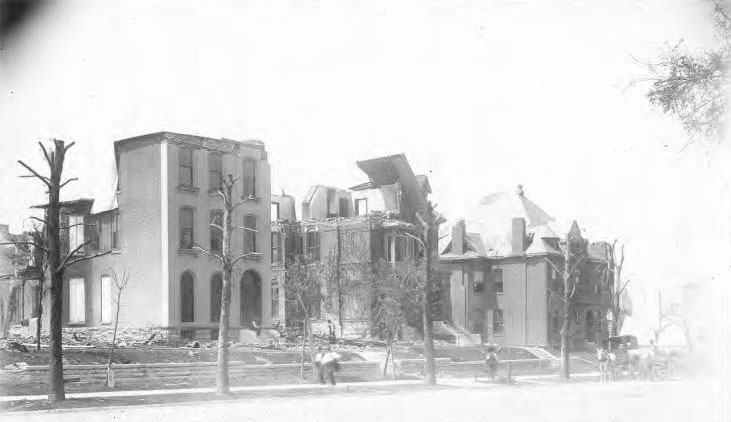

The Graf Engraving Company created a book about the tornado aftermath. I have a copy in English. I have also seen it in German and French. My family’s furniture store, located at the intersection of Broadway and Soulard, was transformed from a three-story structure to a heap of rubble.